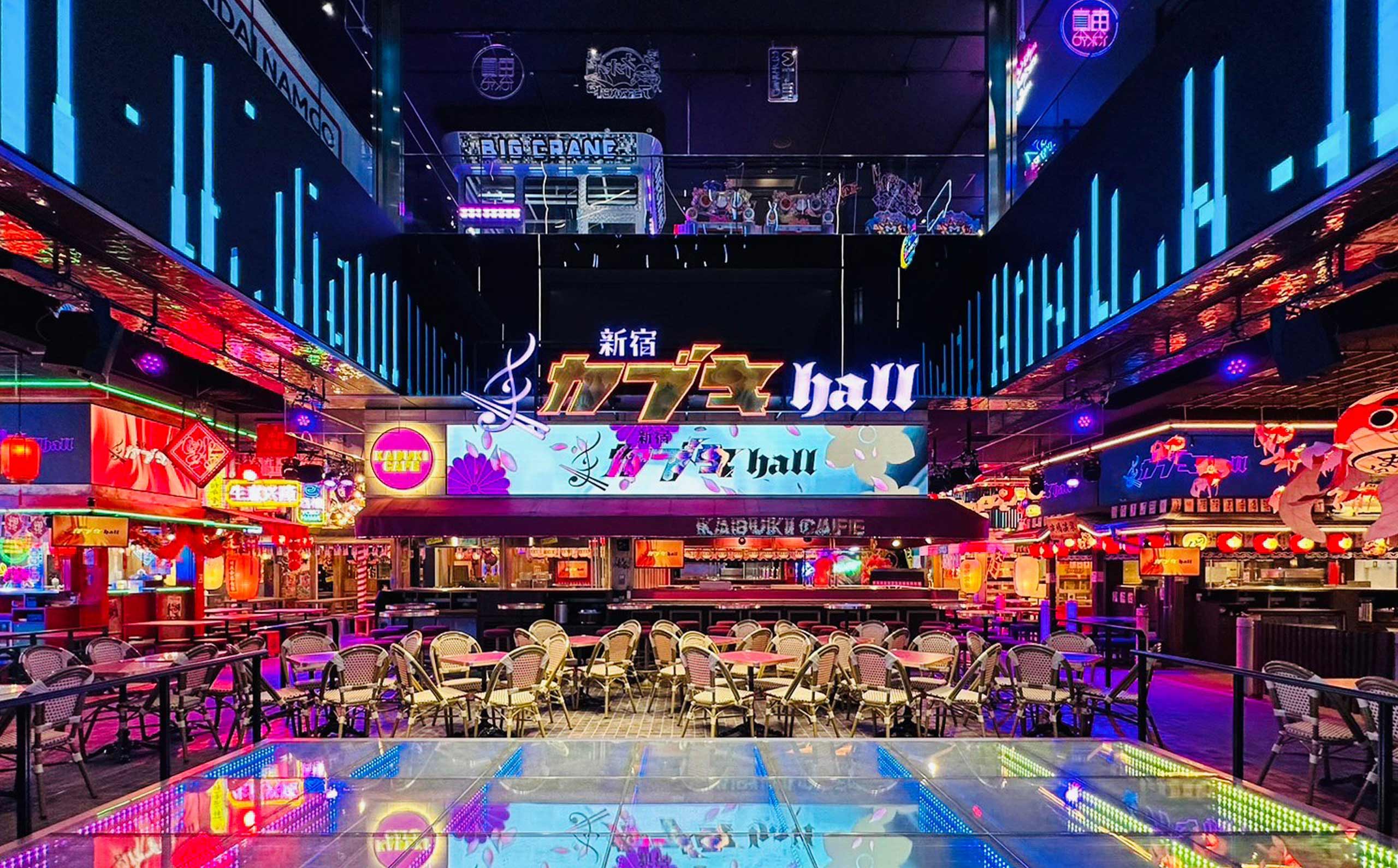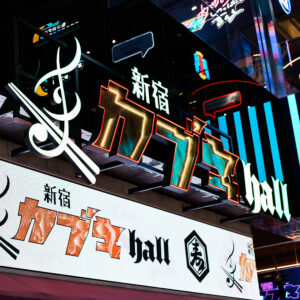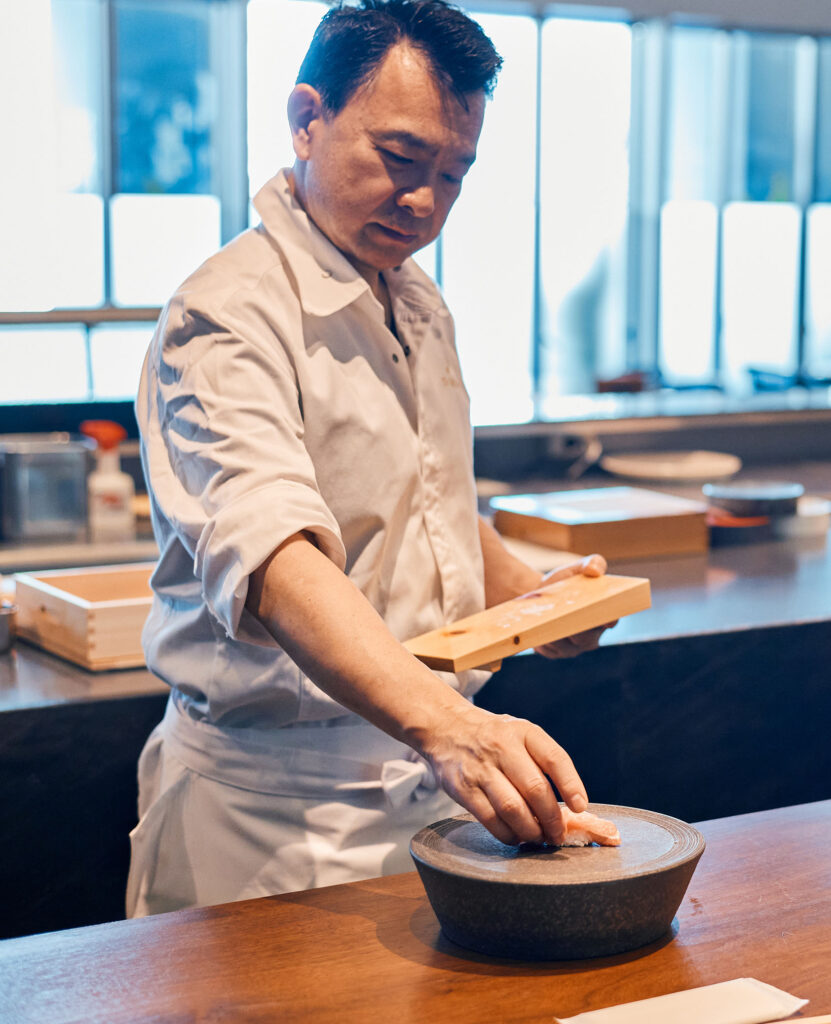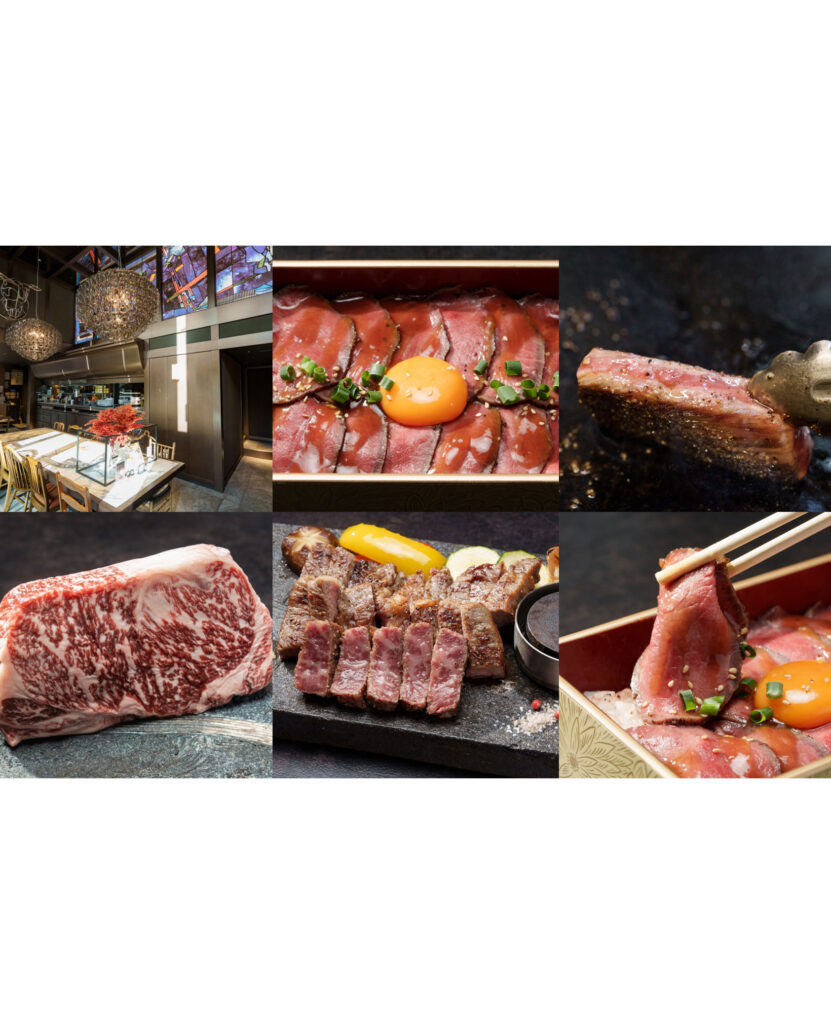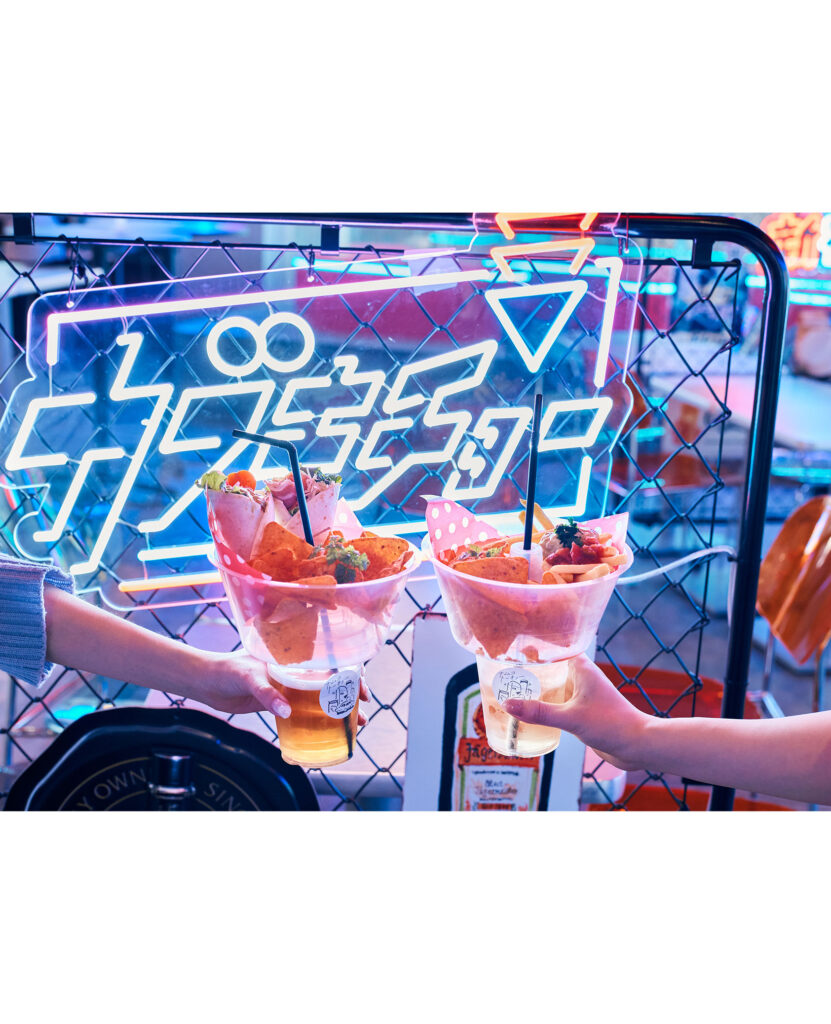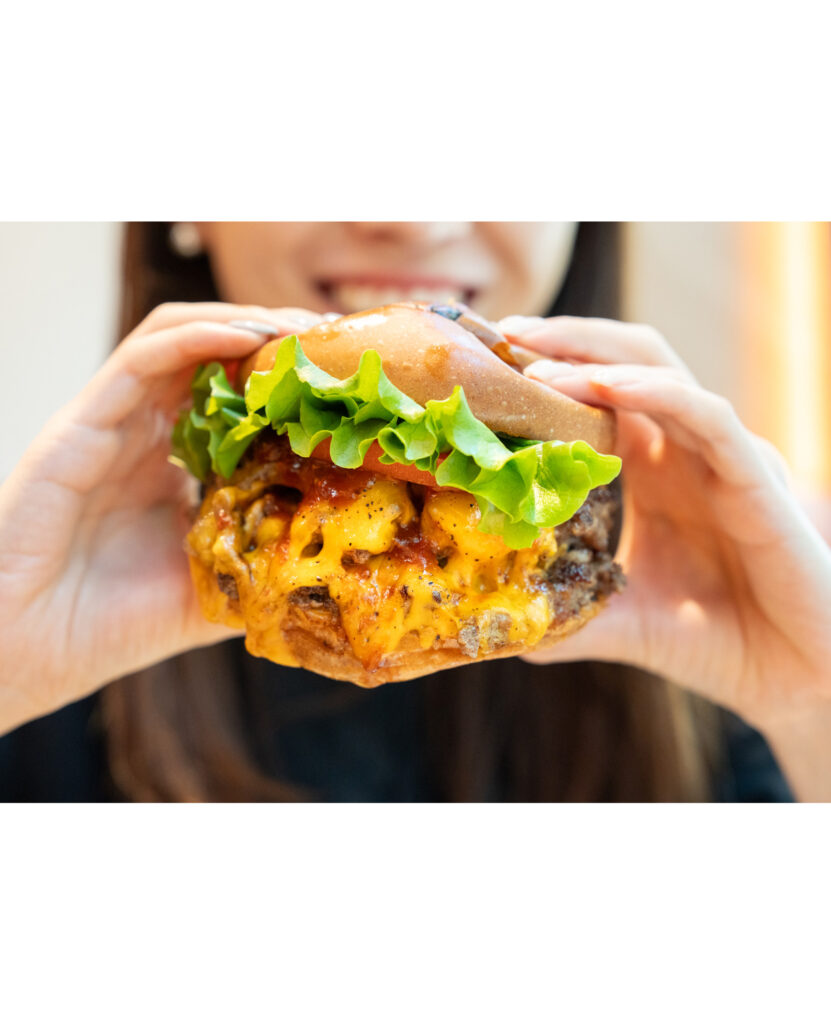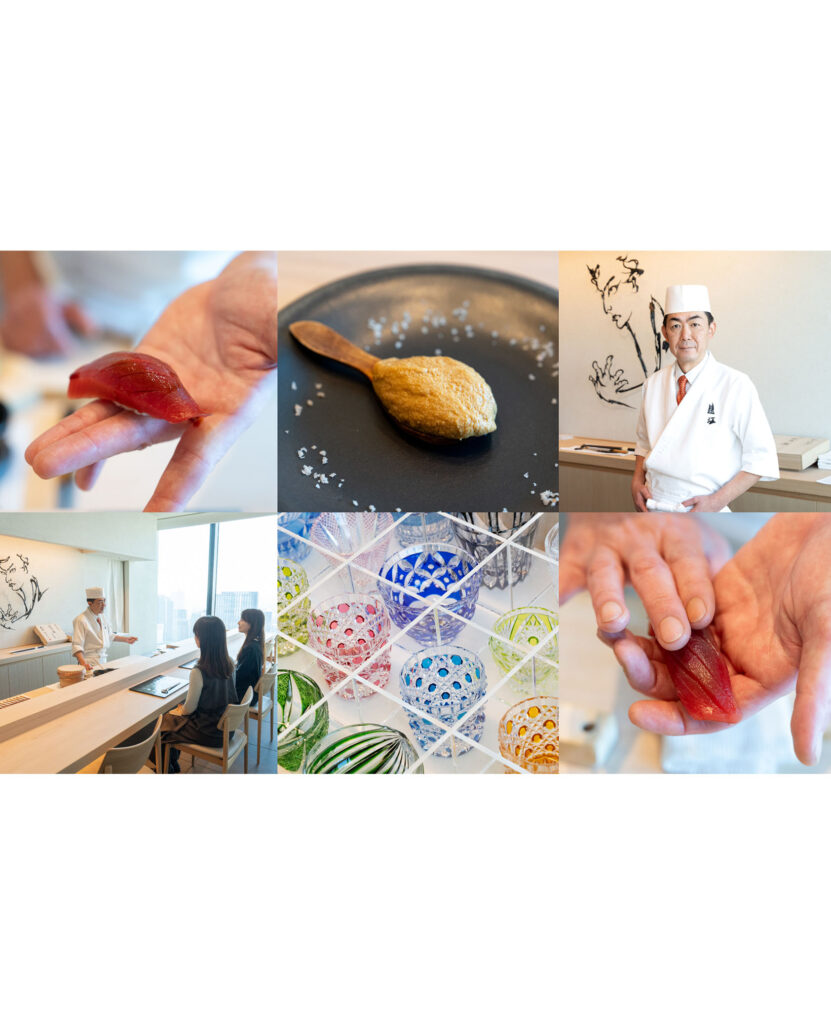“Kabukiyokocho” is a collection of ten izakaya restaurants inside of a cavernous hall on the second floor of the TOKYU KABUKICHO TOWER sky scraper next to Seibu Shinjuku Station in the Kabukicho neighborhood of Shinjuku. The ten independent restaurants offer cuisines from every region of Japan as well as neighboring Korea each one an izakaya featuring the food and drinks of one region, plus one place that is more like a café or casual dining restaurant. It is meant to be a nearly non-stop food festival (the restaurants inside use the Japanese word “shokusai,” written using the kanji characters for “food” and “festival”). Some festivals are open 24 hours.
Please check the hours of operation for each festival here, making this a great place to hang out if you miss the last train home or if you just want a late night snack. Let’s take a look at what this place is all about, starting with the basics. Let’s take a look at what this place is all about, starting with the basics.
What kind of place is a Japanese Izakaya?
Izakaya are places to eat and drink, to relax and have fun. Izakaya are Japan’s version of pubs and taverns (at least the American versions), although gastropub might be a better comparison. There is usually more emphasis on drinking than at a “restaurant.”
Izakaya can be both cheap places to eat and drink or places fancy enough to earn Michelin stars. They are places to gather with friends or co-workers: You can often spot an izakaya by a red or orange paper lantern hanging outside with the kanji characters 居酒屋 or with the name of a beer brand. Some places offer all you can eat and drink plans (tabehodai and nomihodai, respectively), which is great for large groups.
Exploring Japan’s Regional Flavors at Kabukiyokocho

Japan is made up of forty-seven prefectures, but is also comprised of regions that share common histories, geographies, and food cultures. What sets Kabukiyokocho izakaya apart from most others is that each nine of the ten shops feature signature dishes from the different regions of Japan and our neighbor Korea. The tenth shop, the Kabuki Café, is more a combination of a casual restaurant (serving casual Italian fare) and a café. Most of the food served here is usually described as “B class gourmet,” a category of food that is generally inexpensive but creative and delicious and which is extremely popular in Japan. Many of the dishes are described as some prefecture’s “soul food,” regional versions of “comfort food.”
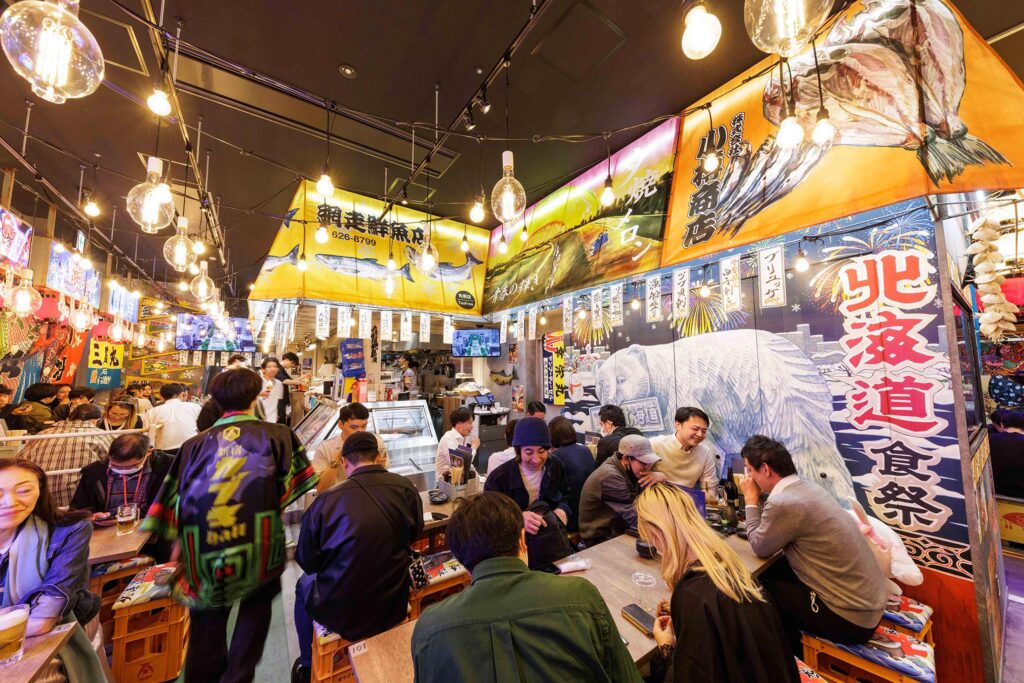
Unlike in an American pub or tavern where you can drink alcohol without eating anything, a big part of an izakaya experience involves food. Almost always when you order something to drink you will be served an otoshi, a small dish of something. And you will be charged a small amount of money for it, even if you didn’t order it. It is something like a table or seating charge. All the izakaya in the Kabuki Yokocho charge customers around ¥500. Because this is not a food court and each restaurant is a separate business, if you move to a second (or more) place you will need to pay the otoshi charge again.
What is the meaning of “Yokocho” used in Kabukiyokocho?
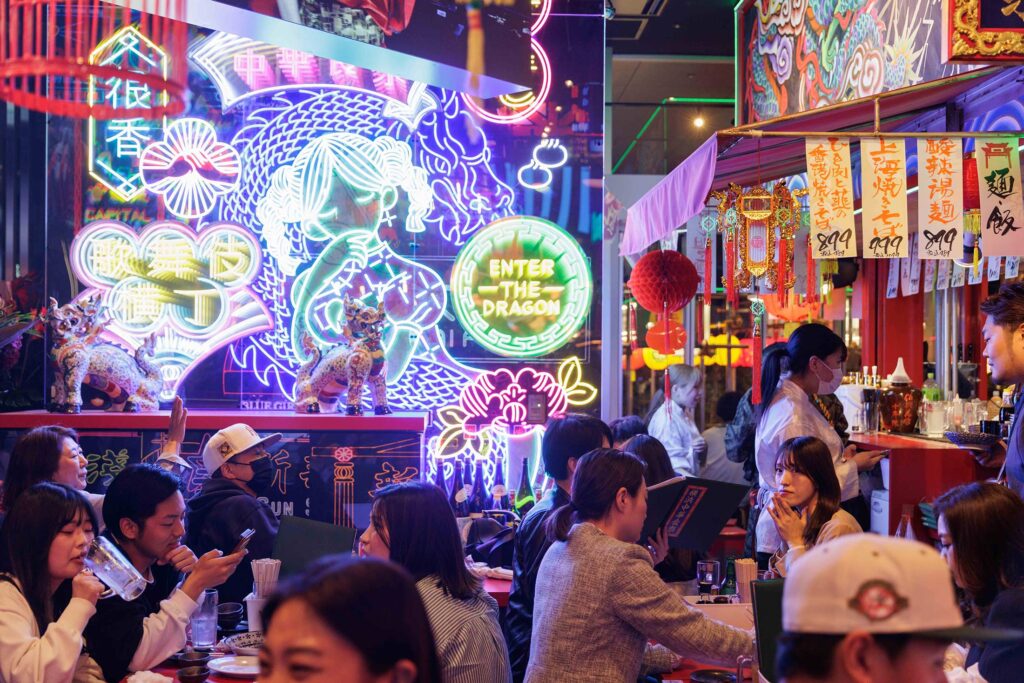
The word “Yokocho” means an alley or a side street (the word “yoko” means something like wide or horizontal). But it is also used to refer to a collection of similar businesses located close to each other. There are several Yokocho areas in Tokyo where you can eat and drink, often late into the night.Two of the more famous Yokocho for eating and drinking are Omoide-yokocho on the west side of Shijuku Station and Golden Gai, in Kabukicho. Both of these areas have numerous small bars and izakaya that came together in the years after WWII.
Kabukiyokocho is different. It does have the same basic things as other Yokocho, but with a twist: the food and drinks come from all over Japan, prepared by small restaurants serving representative dishes from the different regions of Japan, and more. And all of it indoors in a clean and fun environment. For anyone interested in trying foods from all over Japan but without the time to do so, this is a good way to do it.
A Place to Enjoy the Flavors of Japan All in One Spot
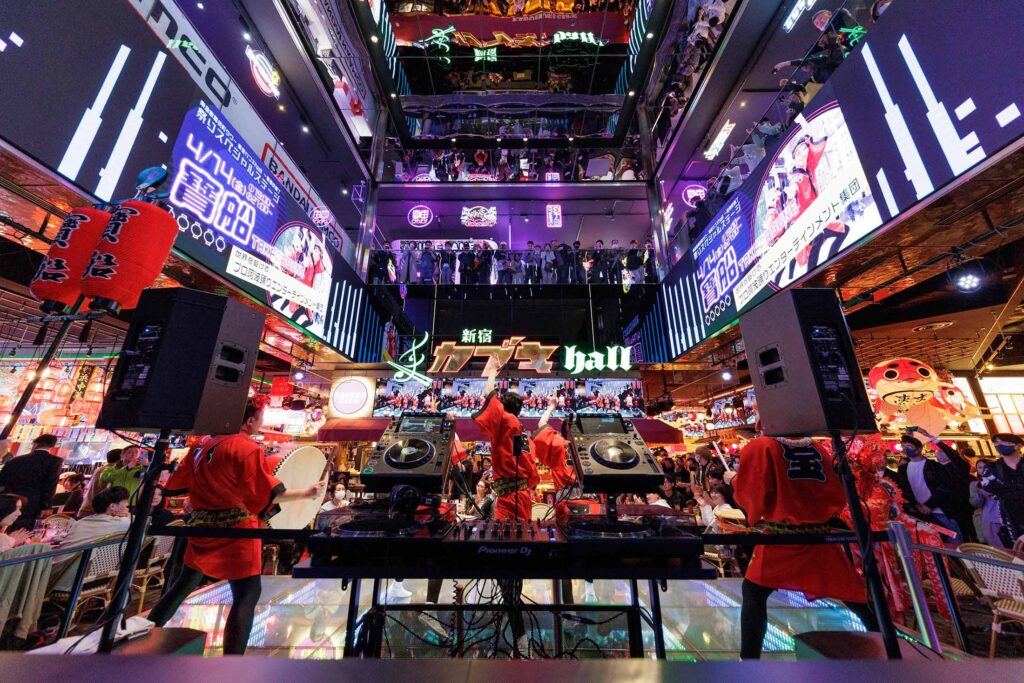
Kabukiyokocho is located just east of Seibu-Shinjuku Station inside TOKYU KABUKICHO TOWER, the area’s tallest building. As you ride up the escalator from the street in front up to the second floor you will first see an enormous, two-story Starbucks. When you reach the top you will find yourself in a spacious hall of color and sound, a room full of ten small izakaya restaurants and decorated with colorful chochin (paper lanterns) and bright neon signage, giving it a very retro look. But at the same time there are large flat screen TVs displaying various images and a powerful sound system and a stage for live music performances.
The tables and chairs are low and in many cases set up in rows quite close together, often close enough to allow for conversation between tables, a great way to meet new people. Everything, including the restrooms, is fully accessible. The staff are friendly, and most seem fairly comfortable using English, so even tourists can feel at ease.
Now, let’s introduce each of the ten small izakaya restaurants in Kabukiyokocho one by one.
HOKKAIDO SHOKUSAI
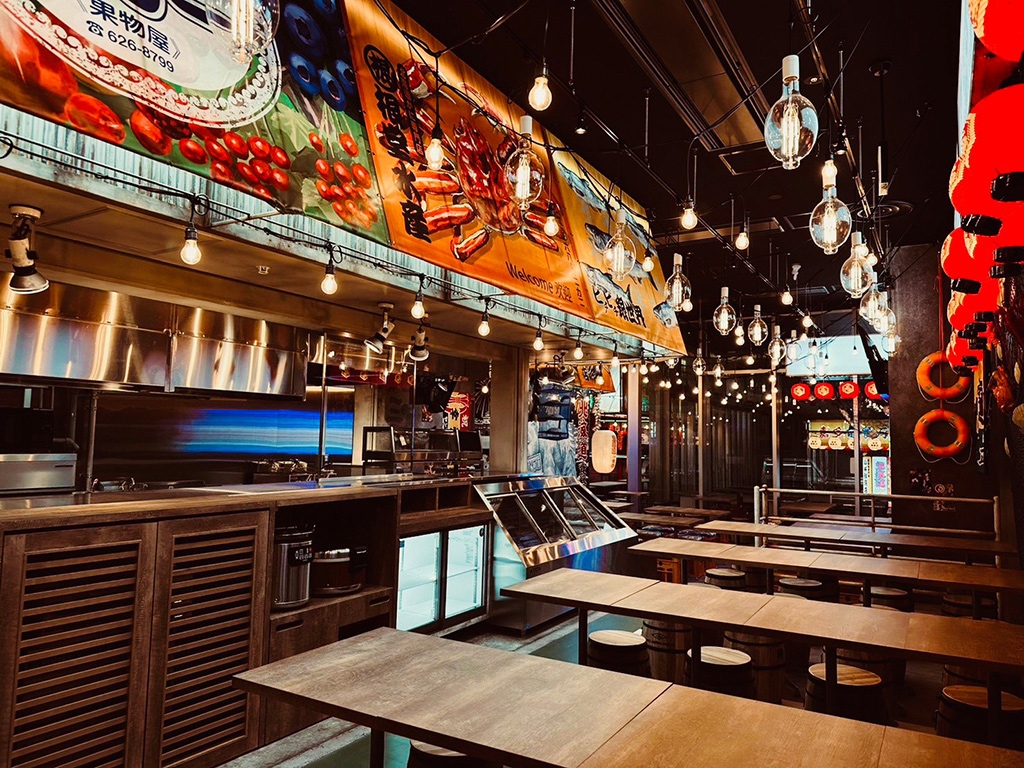
Hokkaido prefecture, the northernmost island in Japan, is famous for many foods, including “ka-re” (curry rice) and ramen (there is even curry ramen on the menu). Seafood is also big in Hokkaido, and here you can try four ingredient kaisen don (seafood donburi, the sea food including crab meat, shrimp, ikura, and uni), fresh scallop sashimi, or something almost all Japanese people love but that is rarely eaten elsewhere, kani miso (the brownish cream inside a crab shell).

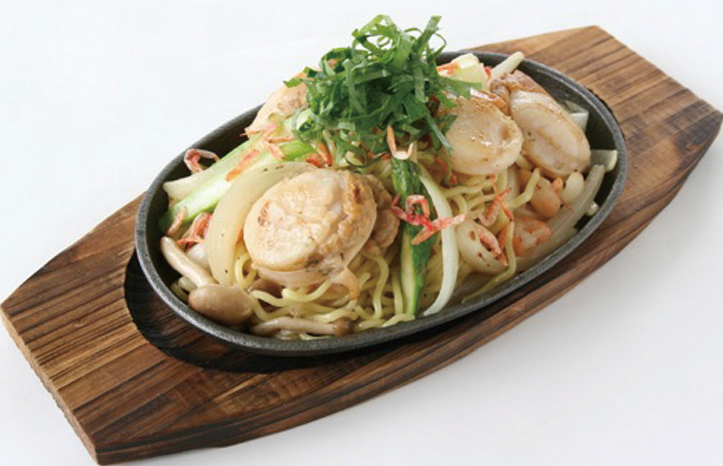
There are also some dairy products, including cheese and soft ice cream. And what would go better with all of this than a glass of delicious Hokkaido wine!
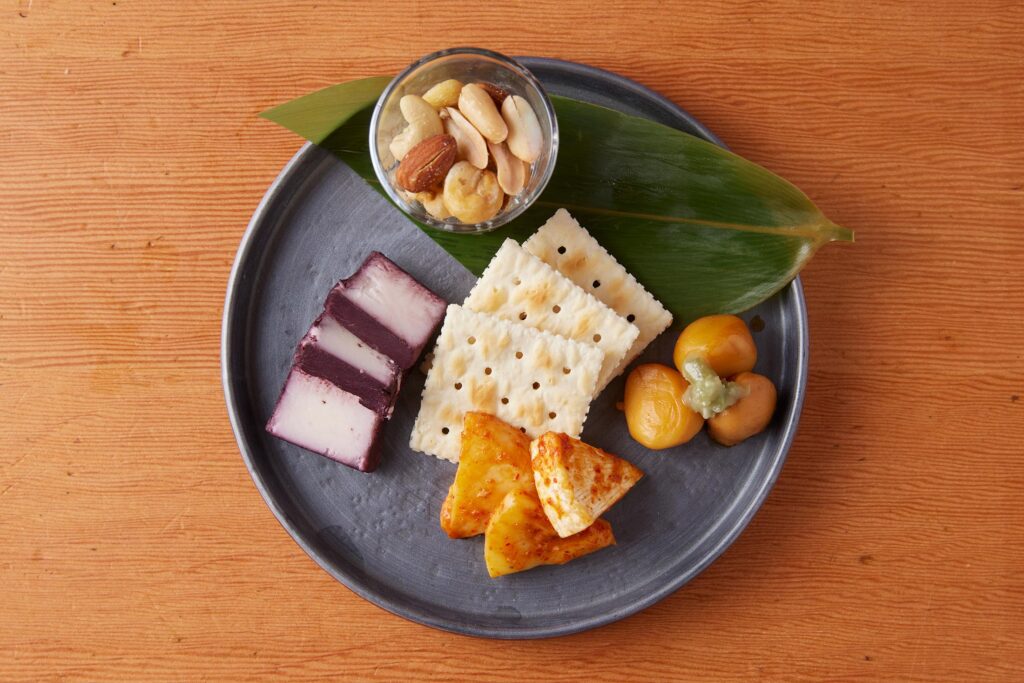
TOHOKU SHOKUSAI
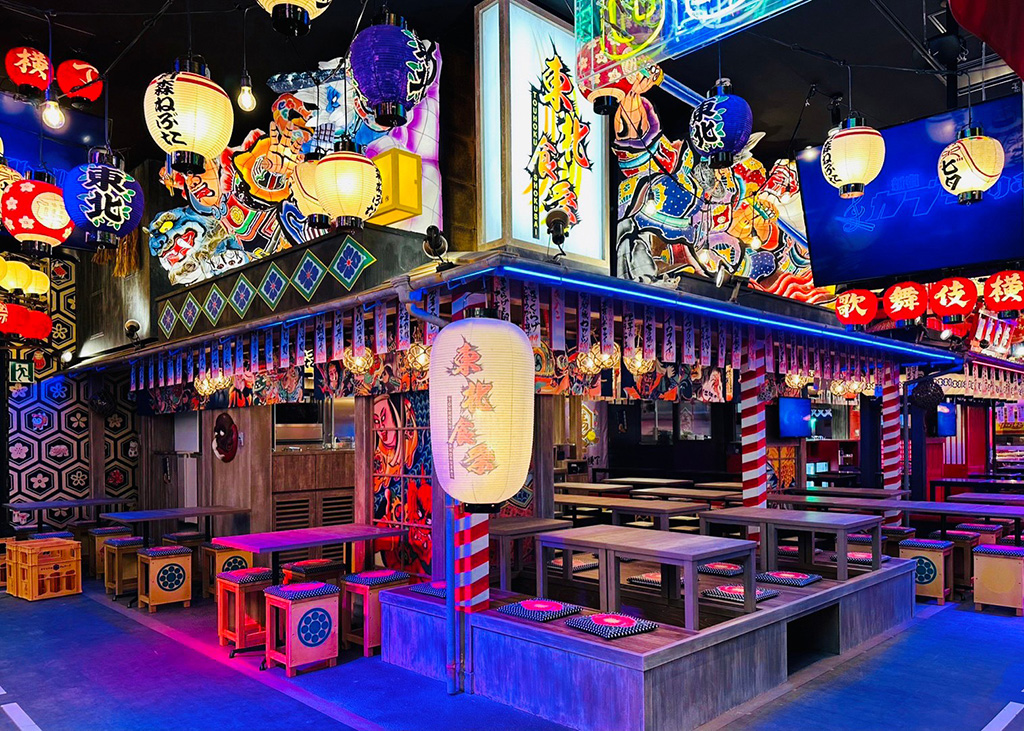
Next, Tohoku Shokusai, featuring foods from the Tohoku region of northern Japan. Being in the far north this region has very cold winters with lots of snow. That means that in the spring there is plentiful snow melt, the water ideal for growing rice as well as for making sake. The colorful pictures on the walls are from the Nebuta Matsuri (festival) held every August in Aomori City.
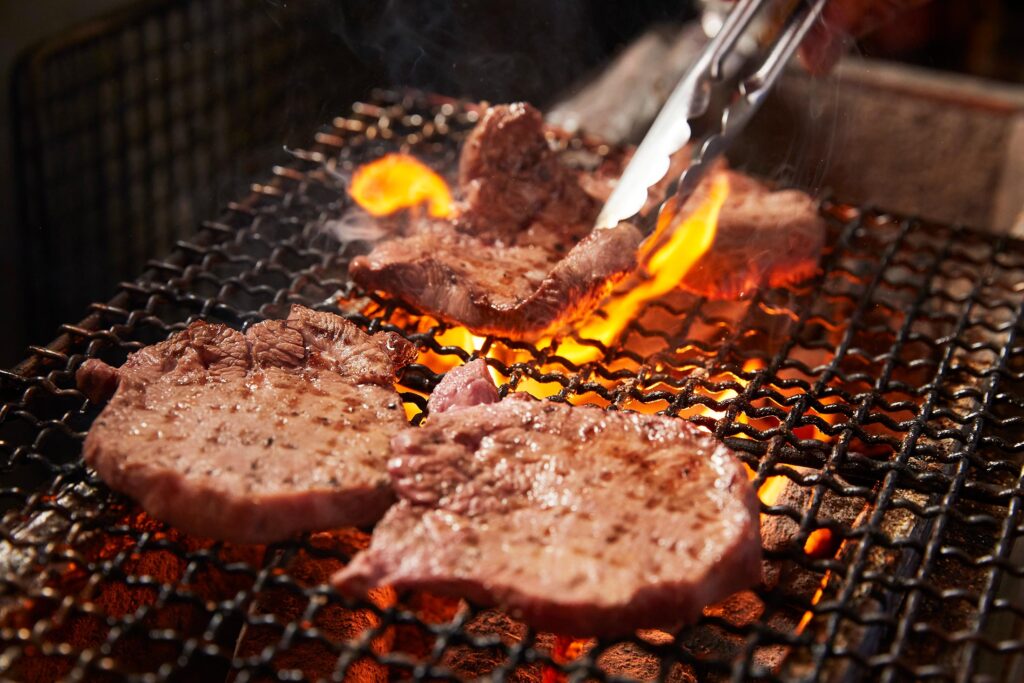

From Sendai City, the biggest city in Miyagi prefecture there is gyutan (beef tongue), the most famous food of the prefecture, prepared in several different ways, as well as grilled Sendai oysters. There is also Jogisan sankaku age (ah-gei), deep fried pieces of triangular shaped tofu that was originally served at a famous Buddhist temple in Sendai. From Akita prefecture there is yakitori prepared using Hinaidori, a breed of chicken that is rated as one of the three most delicious in Japan (ranking things, including foods and things in nature, is a big part of Japanese culture). There is also plenty of gyoza (dumplings) and ramen, comfort foods from the chilly north (Yamagata prefecture is number one in Japan for ramen!).
The Tohoko region is famous for sake, especially “ji-zake” (craft sake), which is the specialty drink here.
KANTO SHOKUSAI
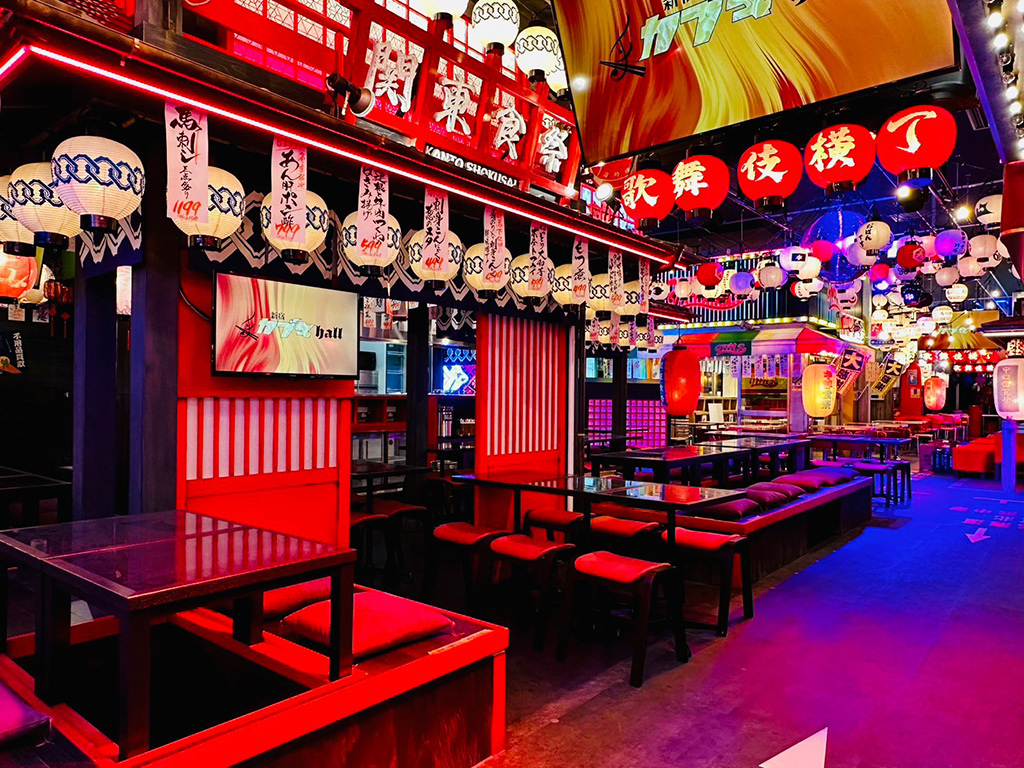
If you prefer to eat some things more familiar to Tokyo, stop by at the Kanto Shokusai (because the sign is in Japanese only, look for this 関東食祭). The Kanto region includes Tokyo, Yokohama, Chiba, and the prefectures to the north. Edo-style dishes predominate, including specialties such as edomae sushi, tenpura, yakitori, and Jindaiji soba, Jindaiji temple in western Tokyo perhaps being where soba noodles were first made. If you are a bit more. For ramen there is Sano ramen, from Tochigi prefecture, voted the number one ramen in Japan. The specialty drink here is a Shitamachi Chuhai (townspeople’ highball), shochu mixed with various fruit juices and soda, or a highball with ume (u-may, Japanese apricot) juice.
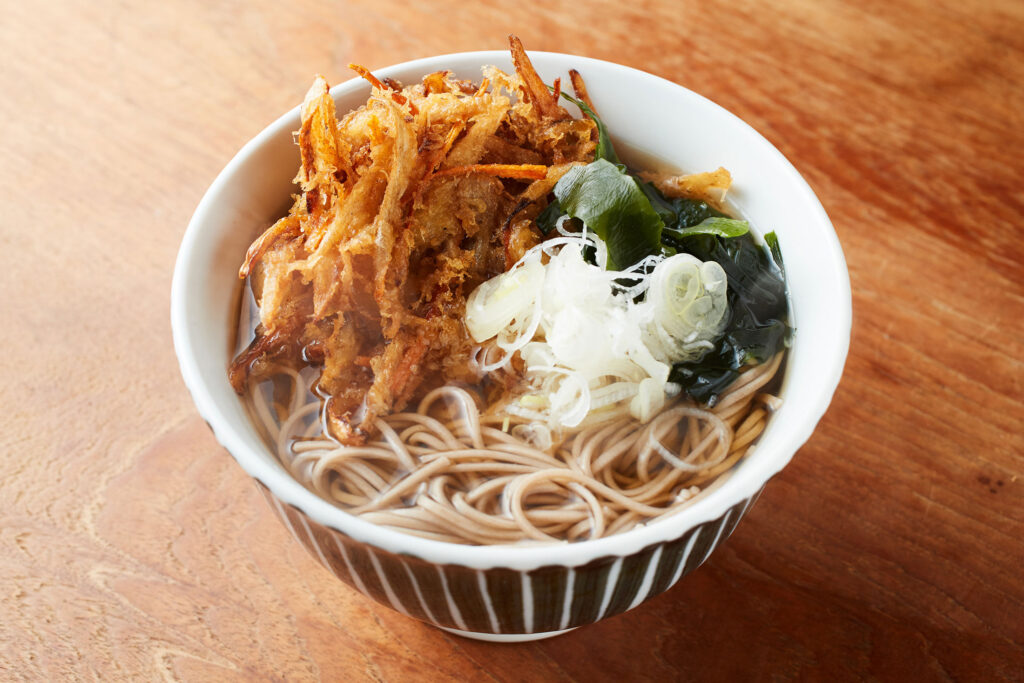
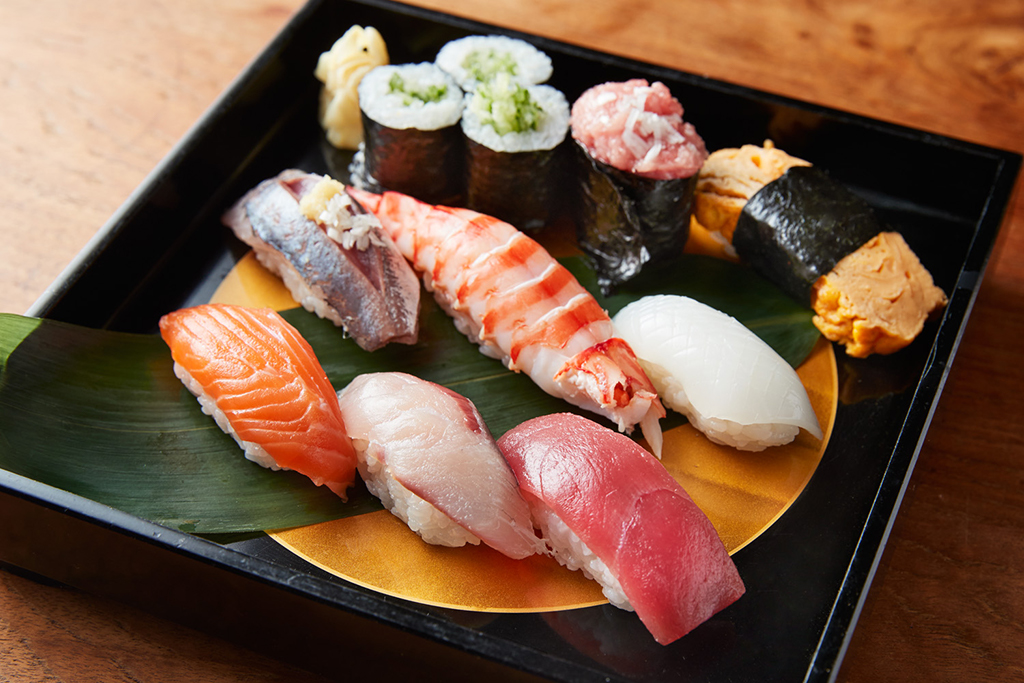
YOKOHAMA CHINATOWN SHOKUSAI
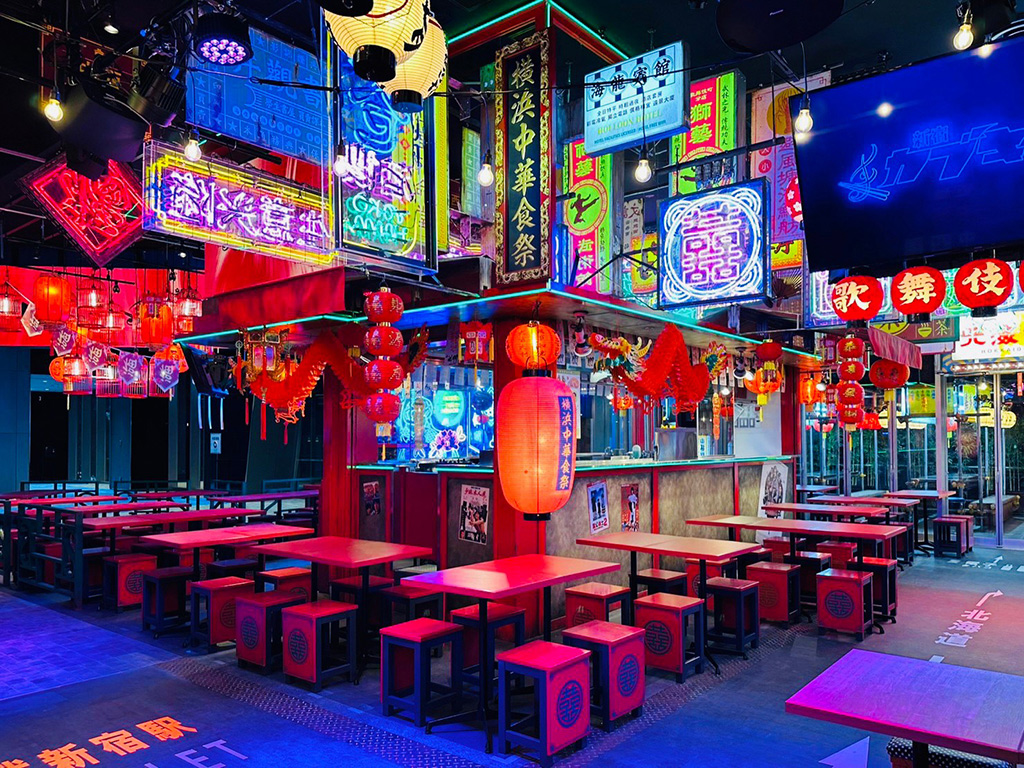
One of the main attractions of Yokohama, Japan’s second largest city by population, is its Chinatown, and especially its many restaurants featuring foods from all over China. Now, instead of traveling to Yokohama to sample the cuisines of China, you can try many of them right here. There is dim sum (gyoza and shumai dumplings), shark fin (with rice or noodles), lamb (cumin spice skewers and with spicy chilis and sansho pepper), and even a cheese and goma (sesame) tofu dish. Interestingly, the shoyu here is from Taiwan (most Chinese soy sauce is made differently than how Japanese shoyu is brewed).
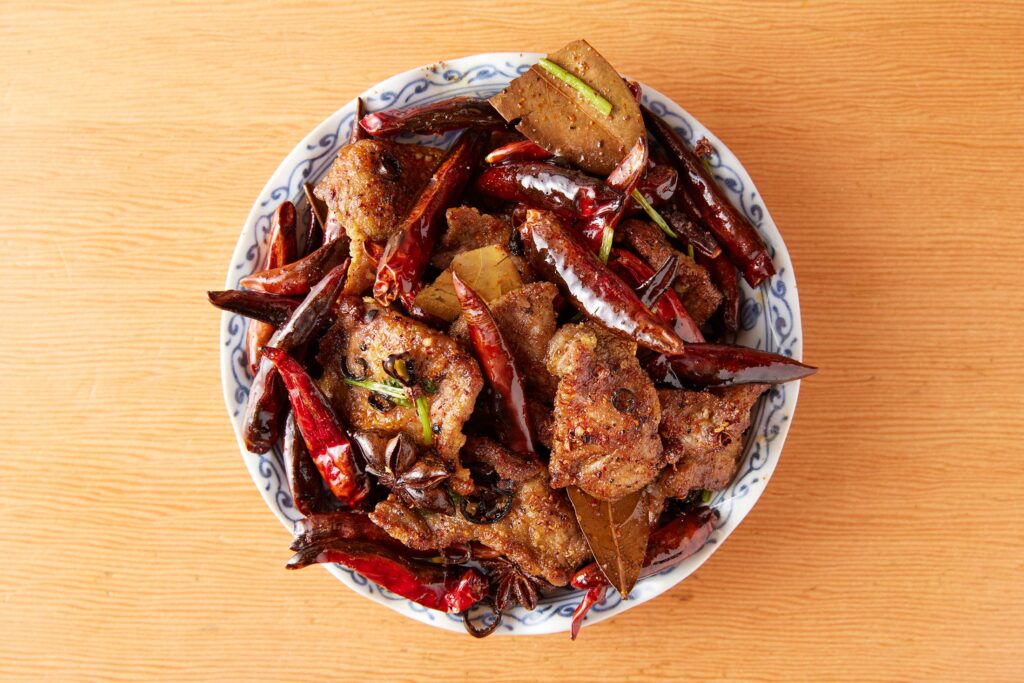
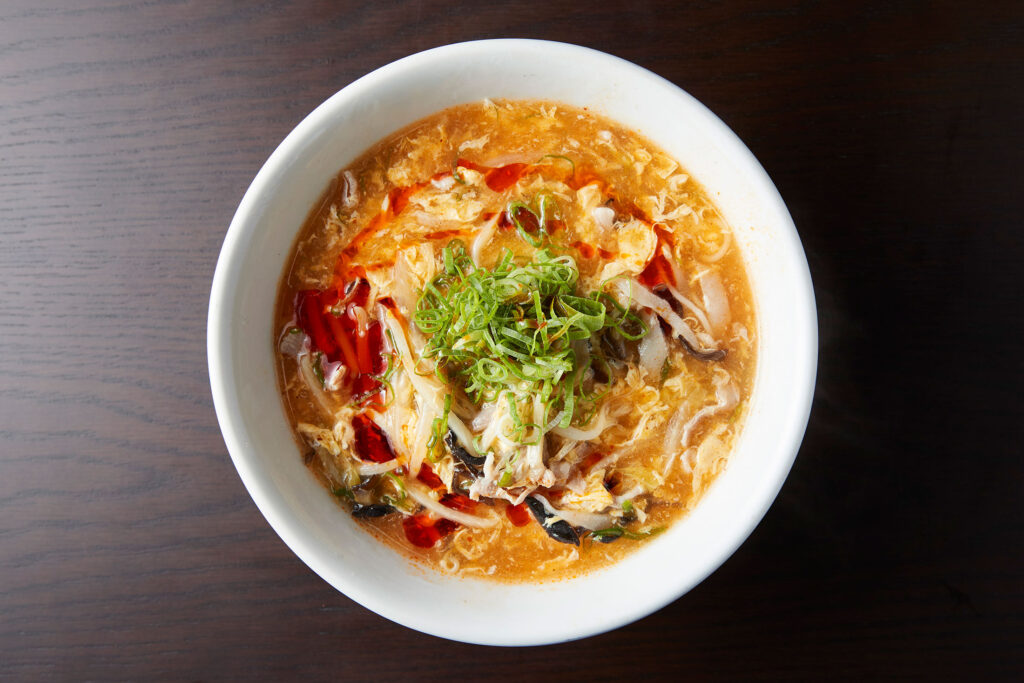
Besides the usual assortment of beverages, there is also Tsintao beer, Chinese Shaoxing wine, and other Chinese drinks.
CHUBU SHOKUSAI
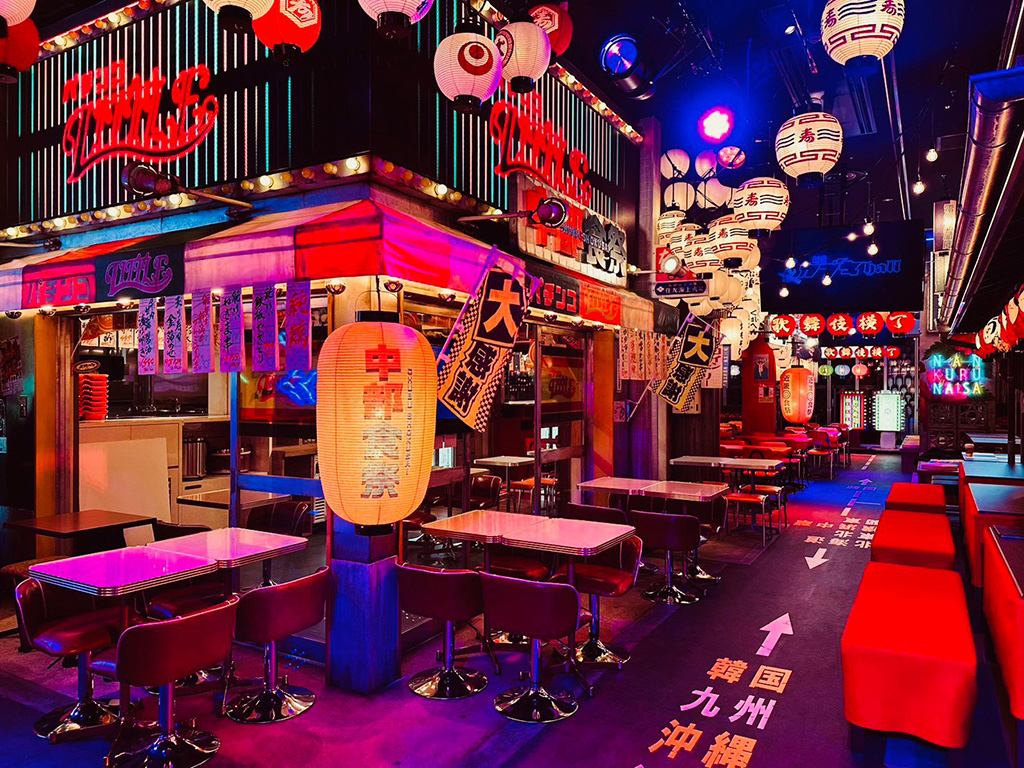
Chubu Shokusai features food from the prefectures that stretch from the Pacific coast to the Sea of Japan coast along the west coast of Japan’s main island between the Kanto region southwest to the Kinki region, a vast and diverse landscape that includes the coastal and inland plains as well as the Japanese Alps, and the major city of Nagoya.
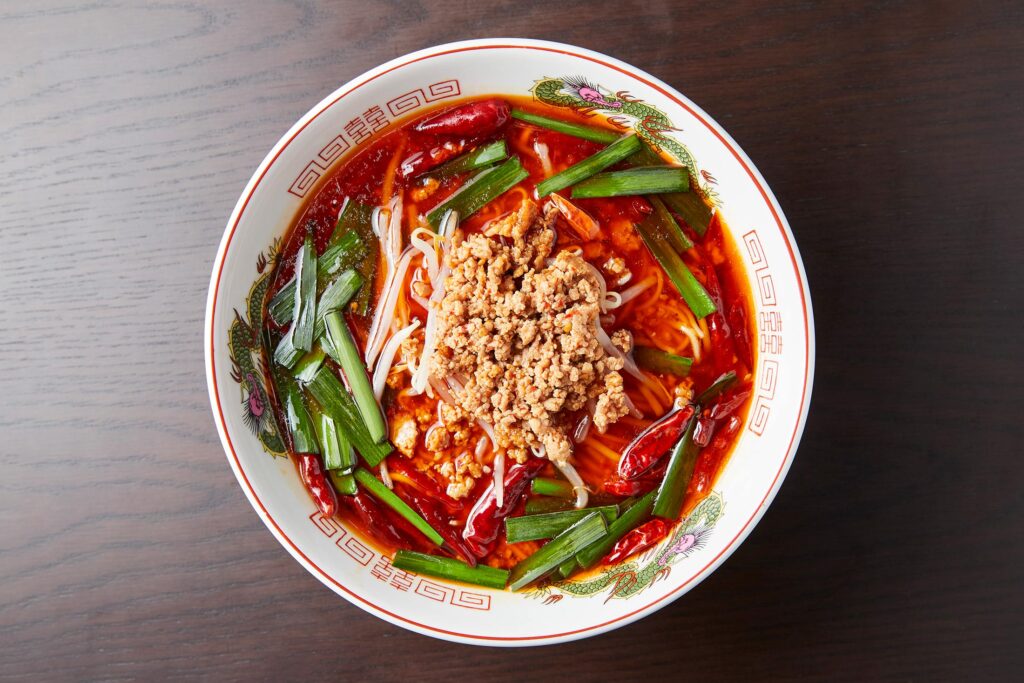
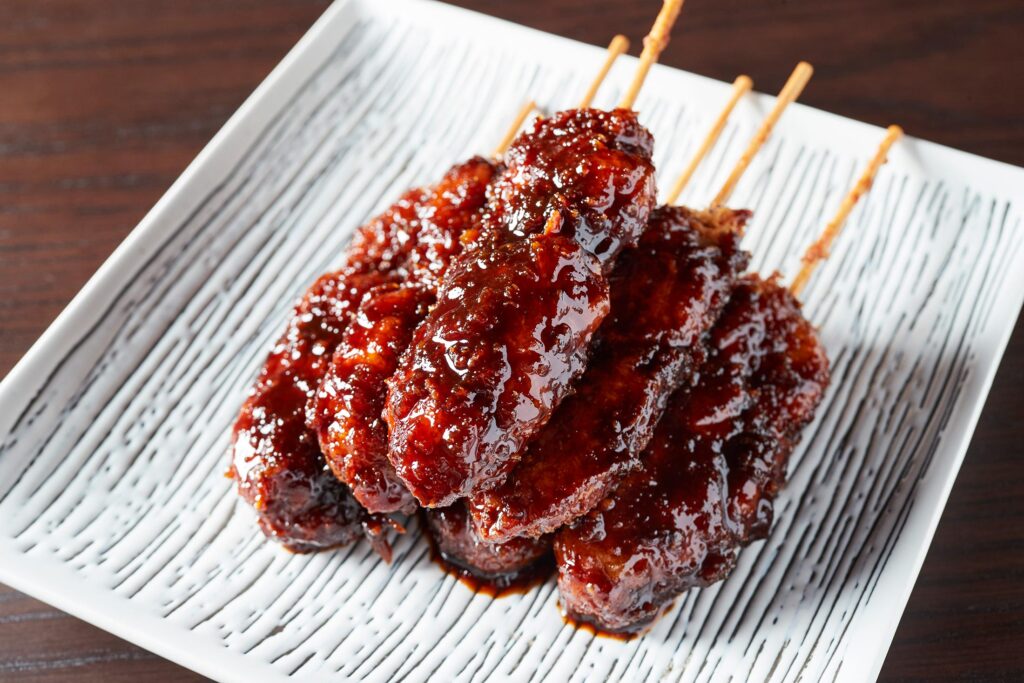
Nagoya, being by far the biggest city of the region, is well represented here, with dishes including chicken wing kara-age, ankake spaghetti, Taiwan ramen, and miso used in an assortment of recipes. From Toyama prefecture there is black ramen and shiro ebi kaki-age (tenpura made with small white shrimp and vegetables).
The Chubu region is famous for producing some of the best nihonshu (sake) in Japan, so naturally there are several included on the menu from throughout the region.
KINKI SHOKUSAI
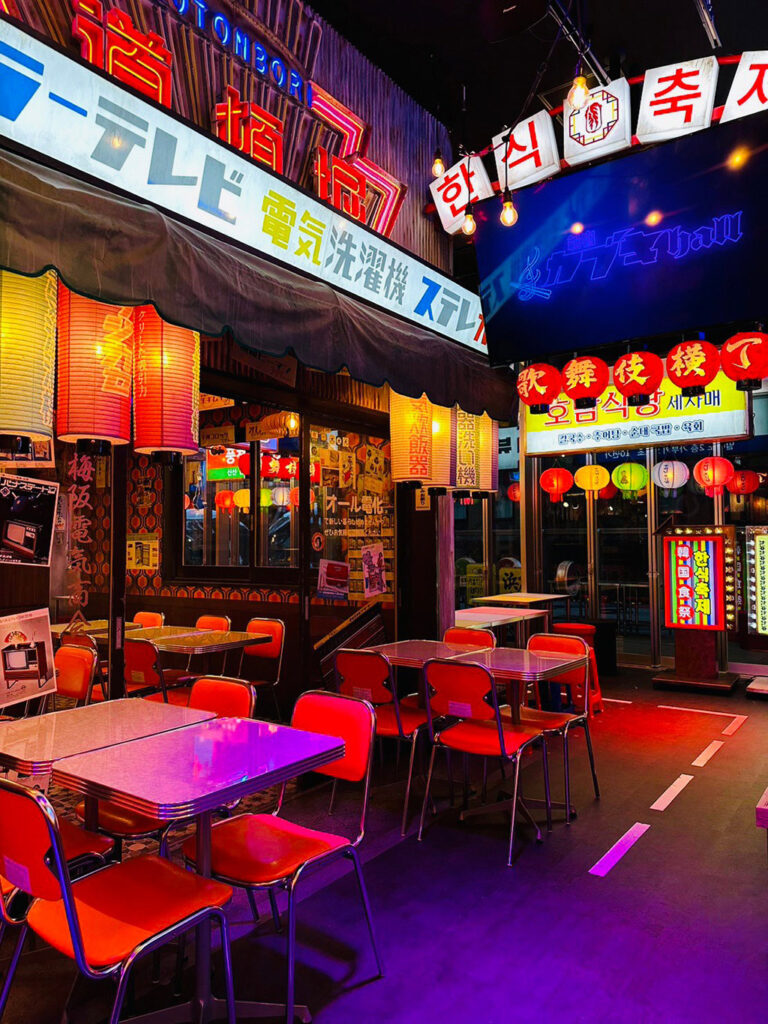
Kinki Shokusai, with a décor of paper lanterns and menu items written on slips of paper posted on the walls, making it look like it could have come directly from Osaka. The Kinki region, also called the Kansai region, is made up of the prefectures surrounding Osaka. This includes Hyogo, home to the city of Kobe. So of course there is kobe beef on the menu, including Kobe beef katsu (breaded and fried slices of Kobe beef). Osaka is represented by kushi katsu (deep fried skewers of breaded meats, fish and vegetables) as well as Osaka style okonomiyaki (savory pancake).
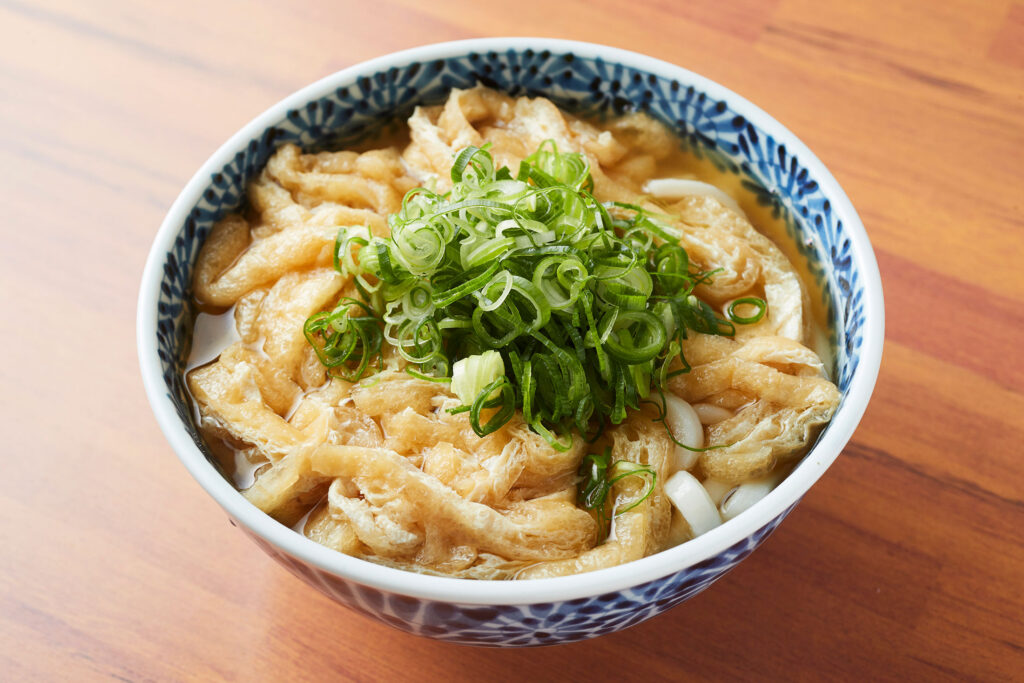
For noodles there is nishin soba (a bowl of hot soba noodles with a herring filet, a dish that originated in Kyoto) and two types of udon, Kyoto-style kyuju negi kitsune udon (udon noodles with pieces of fried tofu and a type of leek Kyoto is famous for) and a similar udon called kizami udon, where the fried tofu is cut into strips (udon is the preferred noodle in the Kinki region, except for Kyoto, which loves soba noodles).
Specialty drinks include Uji macha tea highballs and Osaka mixed juice high balls made with shochu and a mix of banana, mikan and pineapple juices.
CHUGOKU SHIKOKU SHOKUSAI
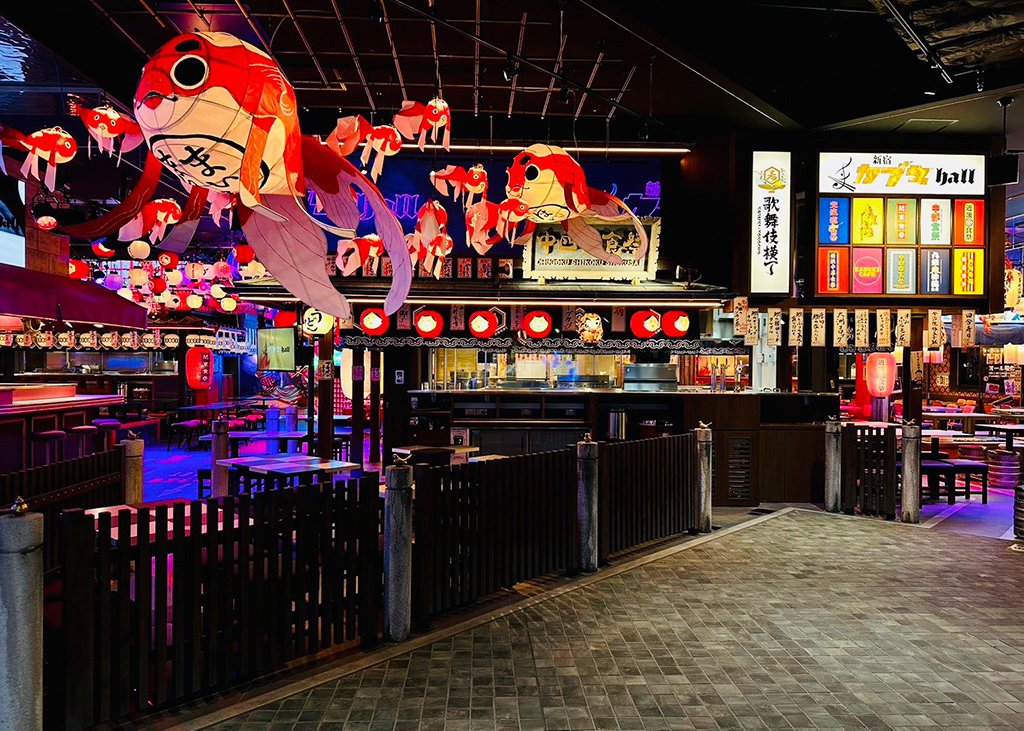
The first restaurant you see when you walk in is the Chugoku Shikoku Shokusai. Chugoku refers to the five prefectures west of Hyogo, all of which have both mountains and access to the sea, which makes for many opportunities for interesting and delicious foods. Shikoku is the name of the island and its four prefectures located in the Inland Sea between the main island and Kyushu. There are plenty of meibutsu (a famous or specialty local product) from both regions on the menu, as well as more standard izakaya fare. And of course there is a wide selection of beverages typical of all izakaya in Japan, plus many drinks specific to the region.
Many of the meibutsu dishes found at this izakaya and at the other regional izakaya have interesting origin stories about their history and where the names came from. Unfortunately, including that here would make this a full-length book.
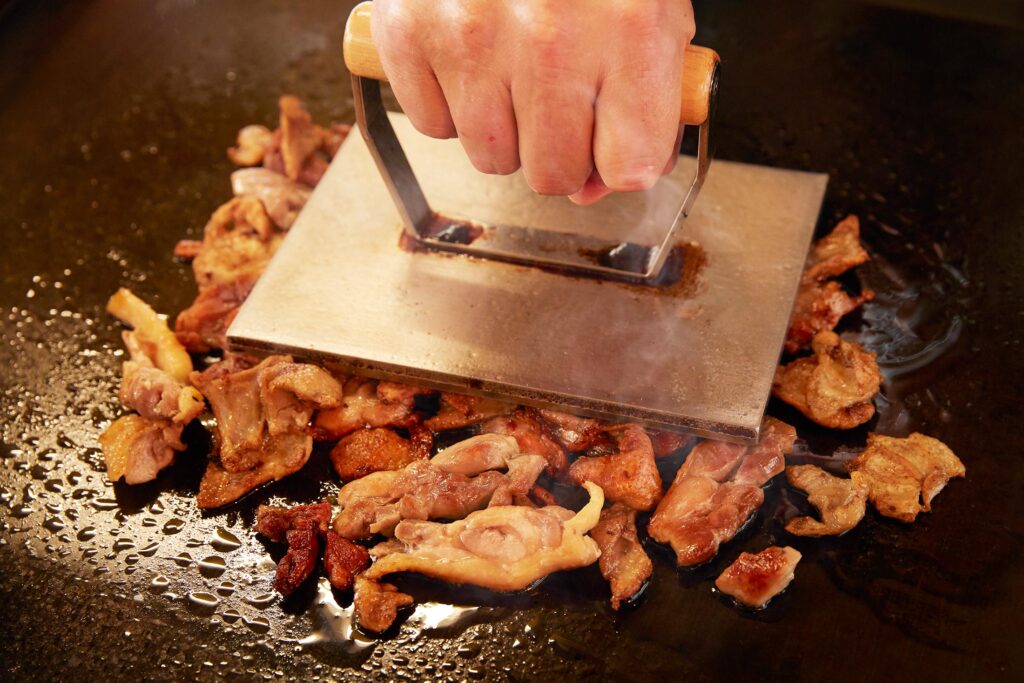
One of the more interesting “meibutsu” dishes from Shikoku is Imabari yakitori, a unique style from the city of Imabari, Ehime prefecture where the chicken is not cooked on skewers but instead on a griddle with the skin intact, the fat from the skin melting to fry the meat. Kochi prefecture is represented with sliced katsuo (skipjack tuna) smoked with rice straw, while Kagawa has its most famous food product, sanuki udon, the most famous udon in Japan.
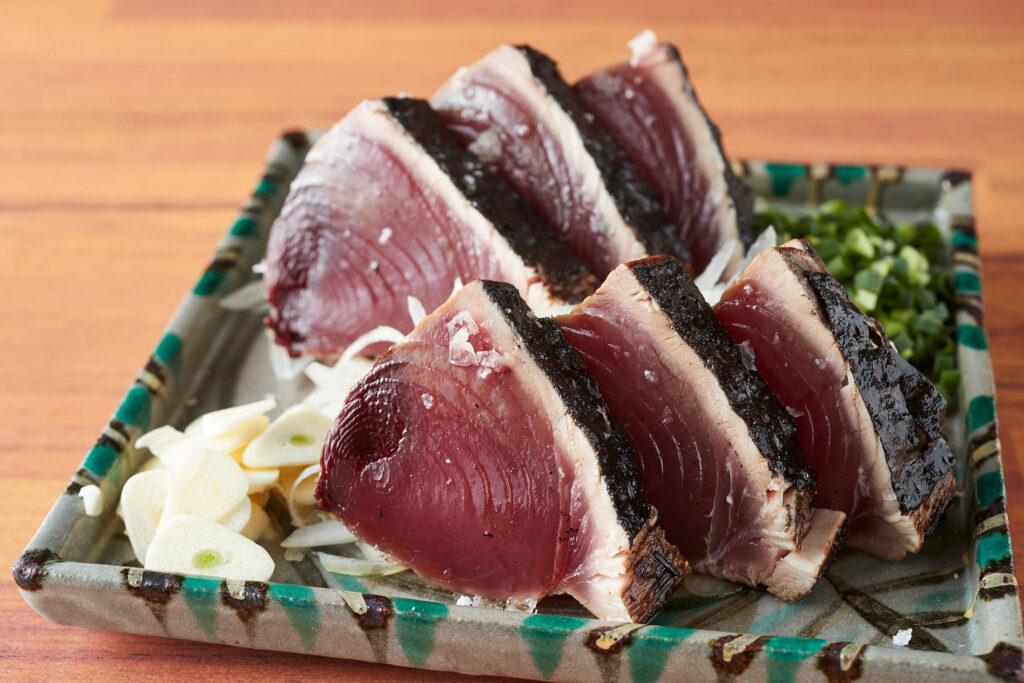
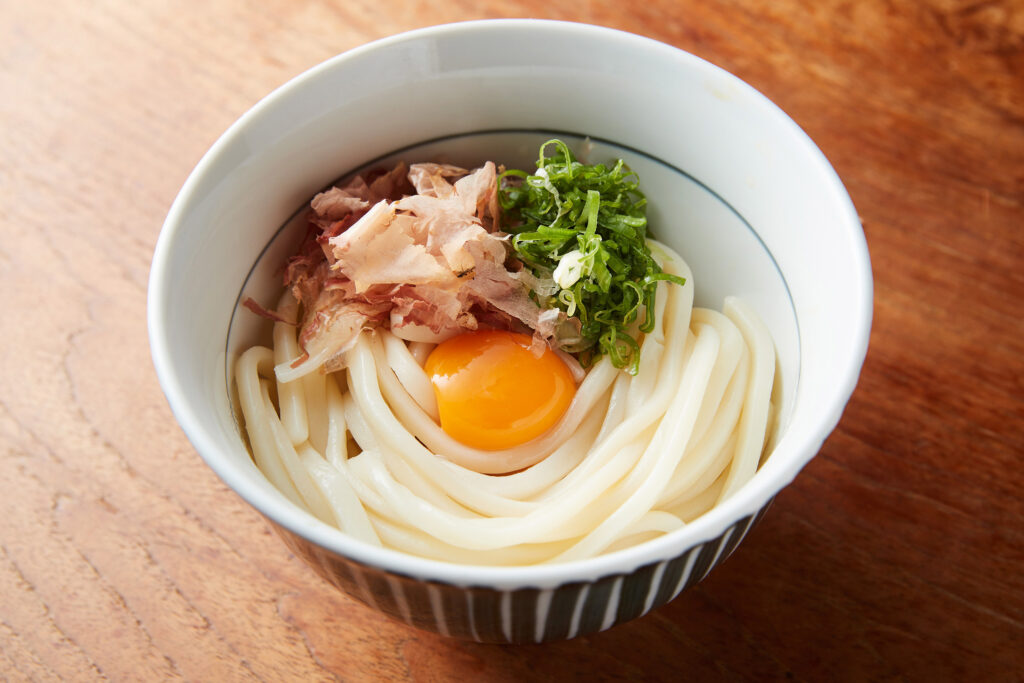
Dishes from the Chugoku region, the area west of Hyogo prefecture, include steamed Hiroshima oysters (1 kg for 1,999 yen) and Hiroshima-style okonomiyaki. There is also onomichi ramen, the preferred ramen of eastern Hiroshima and western Okayama prefectures, which is made with a shoyu base with a chicken and dried fish dashi with thin and wide noodles, topped with chashu pork and sliced vegetables. You can also try some Okayama style tonkatsu don (pork over rice) or an order of Tsuyama horumon-yaki (grilled offal).
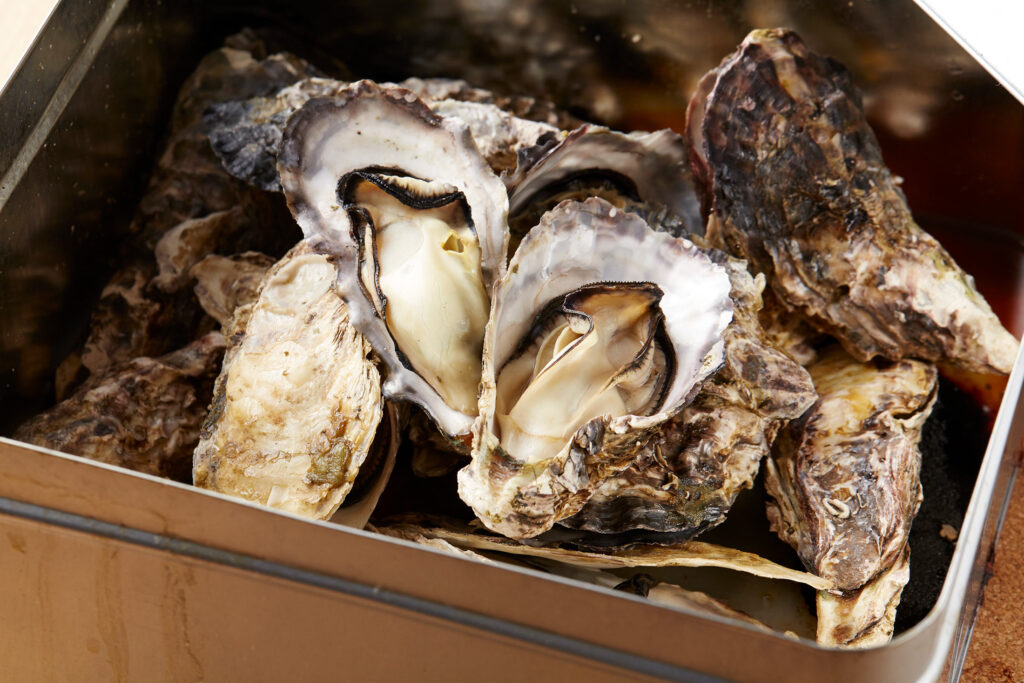
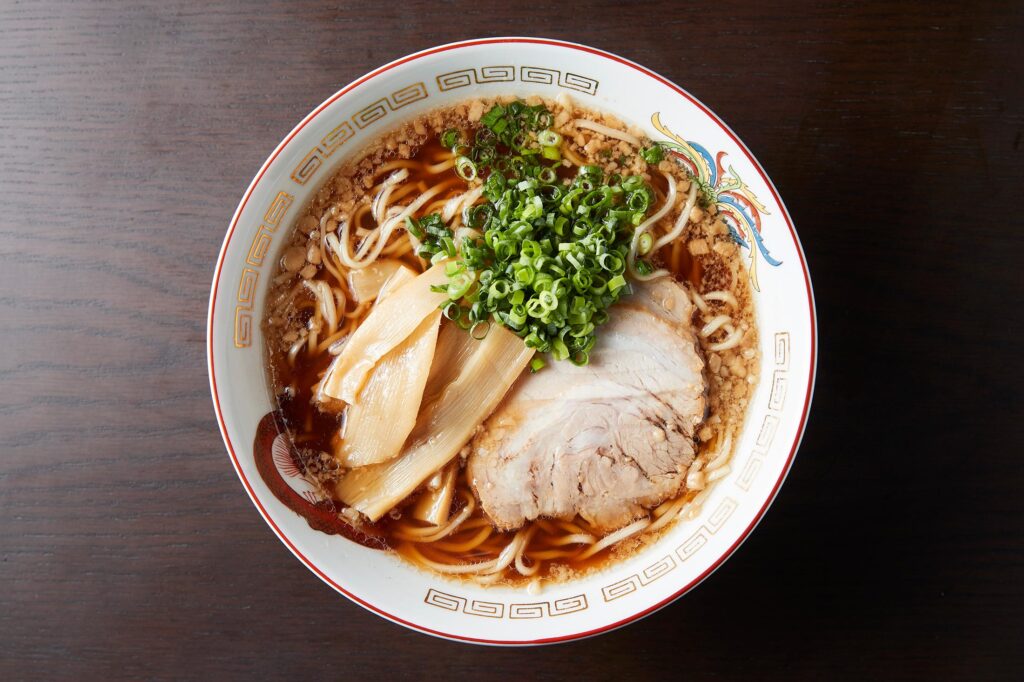
The specialty drink here is lemon sour made with Hiroshima lemons.
KYUSHU AND OKINAWA SHOKUSAI
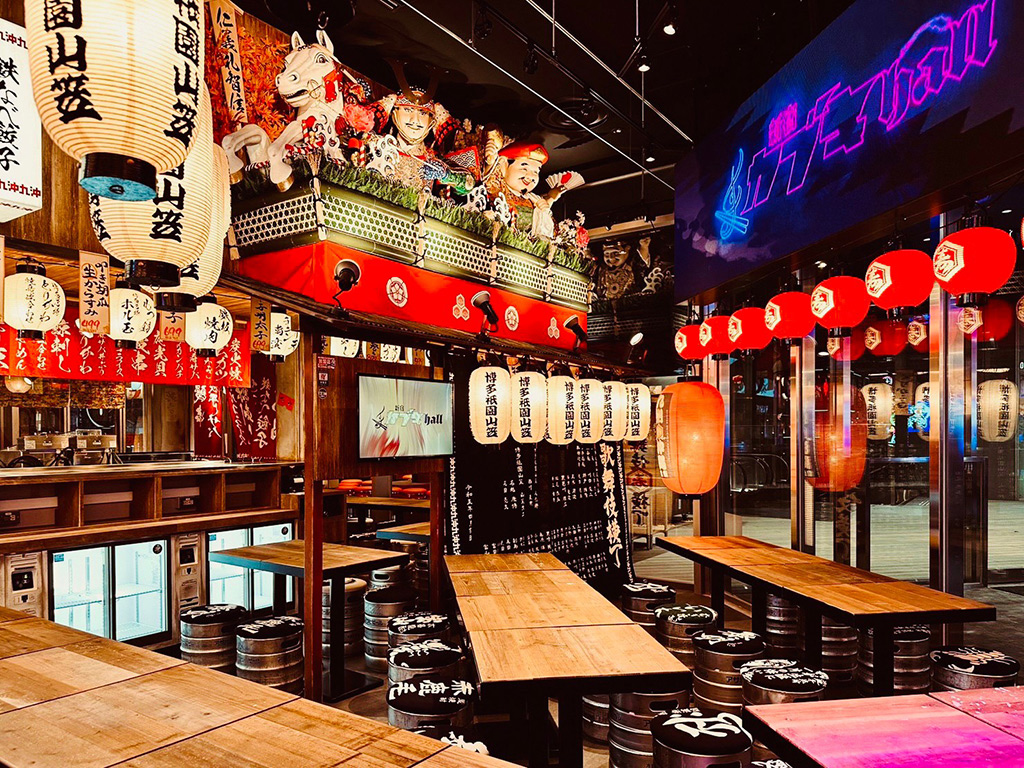
Kyushu Okinawa Shokusai brings together the flavors of both regions in one place. Let us introduce you to the menus of each.
KYUSHU
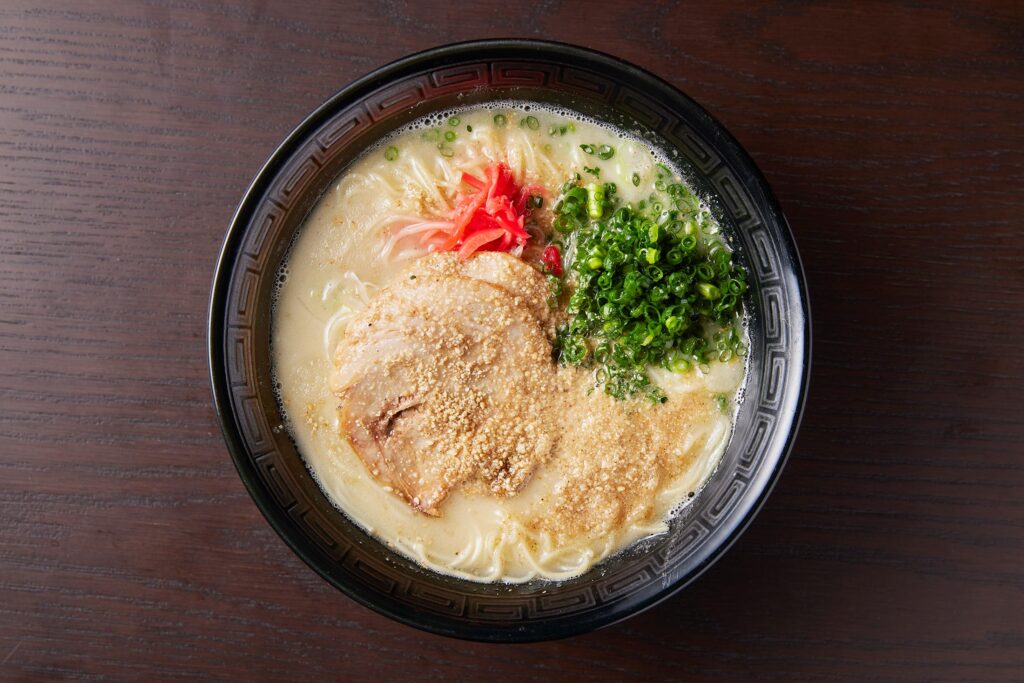
One of the most famous food cities in Japan is Hakata, in Fukuoka prefecture, and here you can find many of the foods Hakata is well known for, starting with Hakata ramen. Also known as tonkotsu ramen, this soup for this ramen is made by boiling pork bones until it becomes thick and milky, then flavored by things such as garlic, onions, and even chicken bones, then topped with a slab of chashu (pork belly).
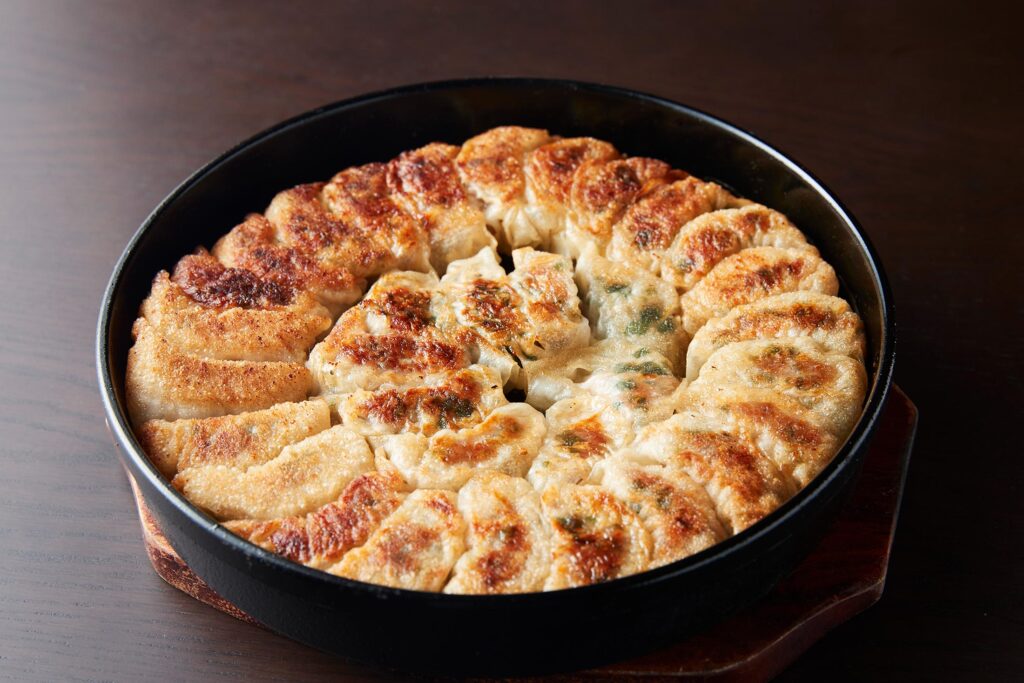
Another Hakata dish is tetsunabe gyoza, a style of gyoza where the dumplings are packed in an iron skillet in a way that resembles the petals of a flower that is most famous in northern Fukuoka prefecture, especially around the cities of Hakata and Kitakyushu. Perhaps due to the area’s closeness to Korea, they are usually served with either a spicy red paste or rai-yu (chili oil). Mentaiko (spicy cod roe) is another famous food from Fukuoka, and here you will find more than a full page of dishes featuring it prepared in a variety of ways.
Chicken nanban, a specialty of Miyazaki in southern Kyushu, is a breaded chicken breast fillet pan fried and served with tartar sauce (“nanban” means “southern barbarians,” a term used for the Europeans who came to the area in the early 16th century). The small prefecture of Saga is represented by fish, both raw sashimi as well as grilled. For more adventurous diners there is supon (snapping turtle) liver sashimi and various servings of kujira (whale meat).
Don’t be surprised if the taste of the shoyu (Japanese soy sauce) here is somewhat on the sweet side. In Japan the flavor of shoyu gets sweeter as you go south and west. This is just one small example of this attention to detail.
OKINAWA
Okinawan food culture is much different than that of the rest of Japan. This is due mostly to it having a warm, sub-tropical climate, its proximity to and historical ties to Taiwan and China, and more recently, the presence of American military bases on the island. Each of these reasons has influenced what people there eat these days.
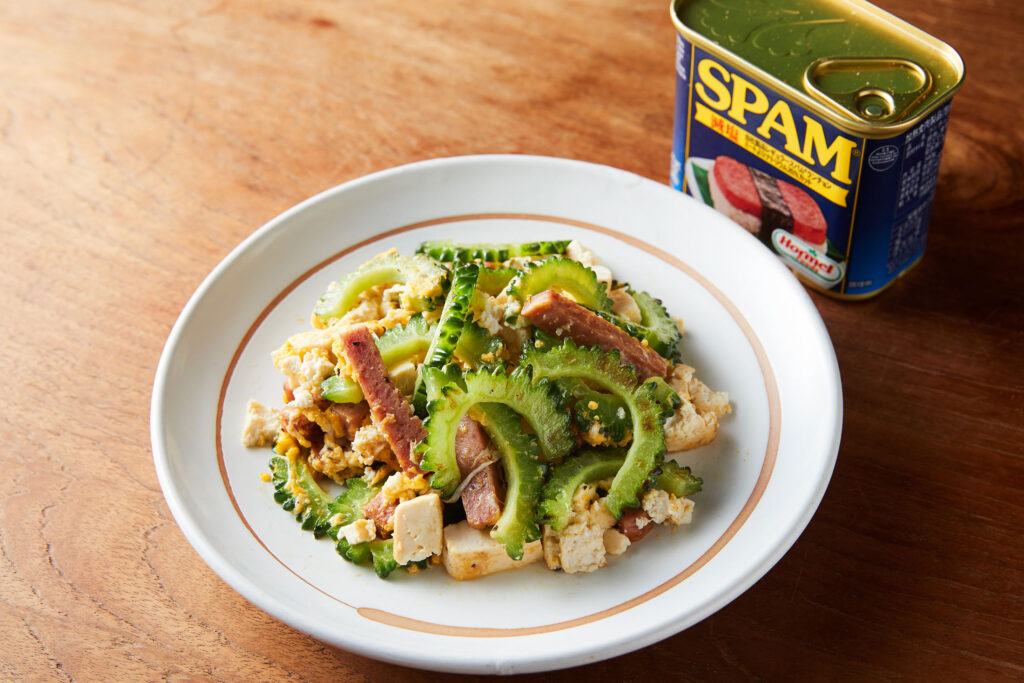
What is generally considered to be the most representative dish from Okinawa is goya chanpuru. This is a stir-fried mix of goya, a vegetable known in English as “bitter gourd” due to its bitterness, along with tofu and either pork or Spam. Spam, introduced to the islands by the US military after the war, is very popular in Okinawa. Goya is reputed to be a very healthy vegetable.
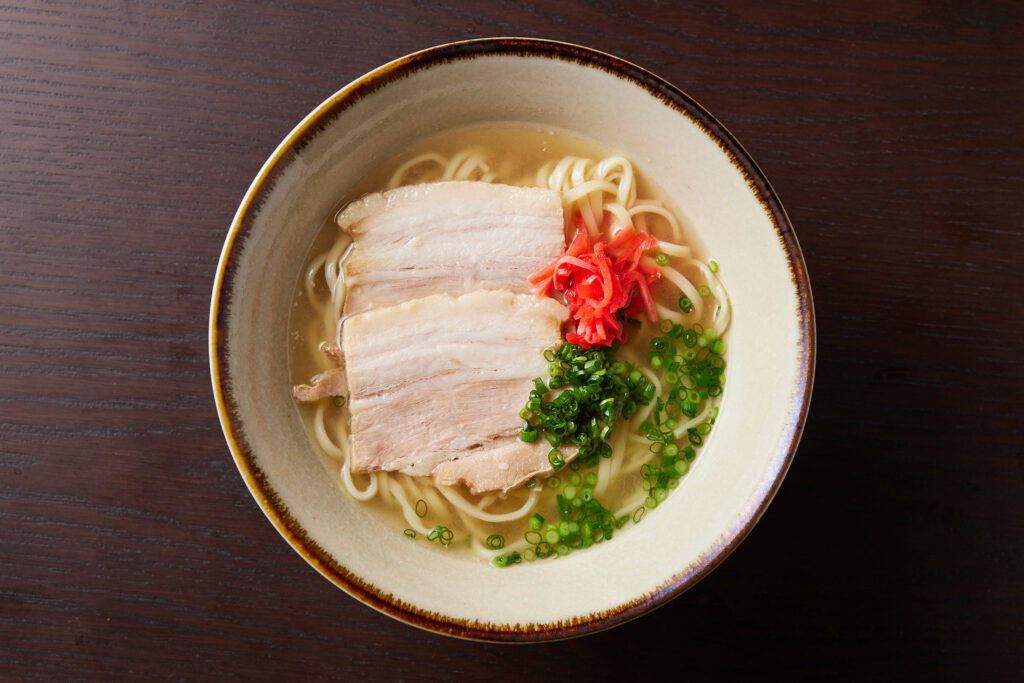
One signature dish from Okinawa is Okinawa soba. Unlike soba in the rest of Japan, which is made from soba (buckwheat) flour, Okinawa soba noodles are made from wheat. They are served in a broth made from katsuobushi (dried and shaved skipjack tuna), konbu (dried kelp), and pork, then served with a piece of pork on top along with a piece or two of kamaboko (fish-paste loaf) and some finely minced scallions. The type of pork and the style of noodles varies from island to island. Another famous item also introduced to Okinawa by Americans is “taco raisu” (taco rice). This is essentially an American style taco consisting of ground beef, shredded cheese, lettuce, tomato, and some salsa, only not served in a taco shell but instead over rice.
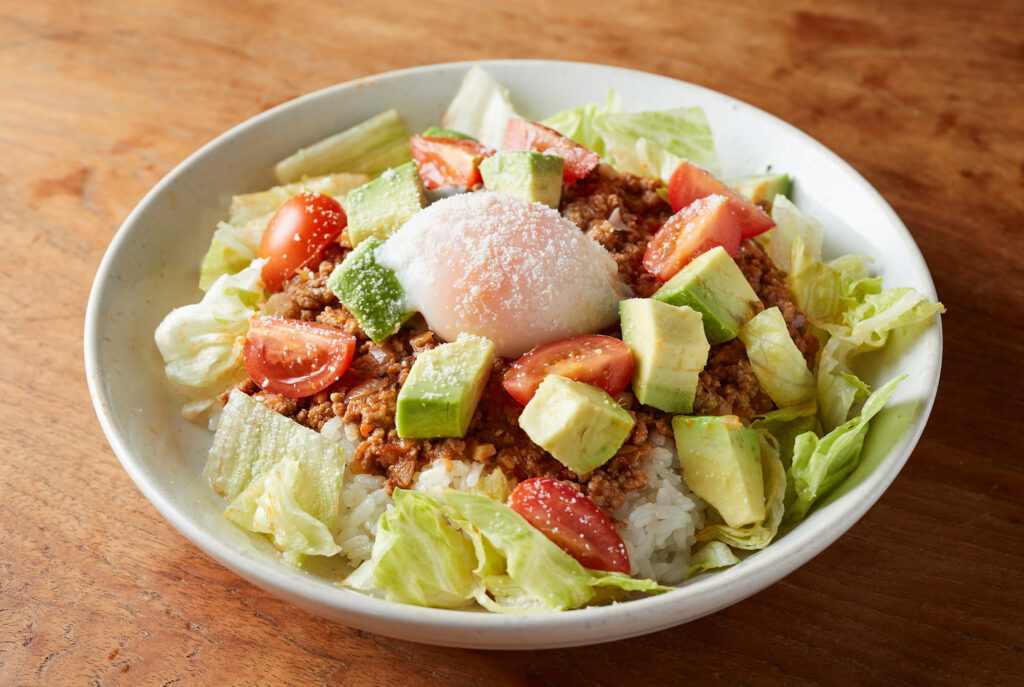
In addition to the usual beverages on the menu, there are also two types of distilled spirit closely associated with the two regions; shochu, from Kyushu, and awamori from Okinawa. Shochu is a spirit generally distilled from either sweet potatos (in Japanese, imo, in southern Kyushu) or barley (mugi), in northern Kyushu, especially Oita prefecture. Awamori is a spirit distilled from long-grain Thai rice. All can be served with ice or mixed with soda, hot water, or for shochu, strong green tea. You can also drink some Orion beer from Okinawa (pronounced O-ri-an), a very light bodied beer brewed to suit the hot climate of the islands. Don’t miss the large glass jar filled with awamori with a large snake inside next to the entrance!
KOREA SHOKUSAI
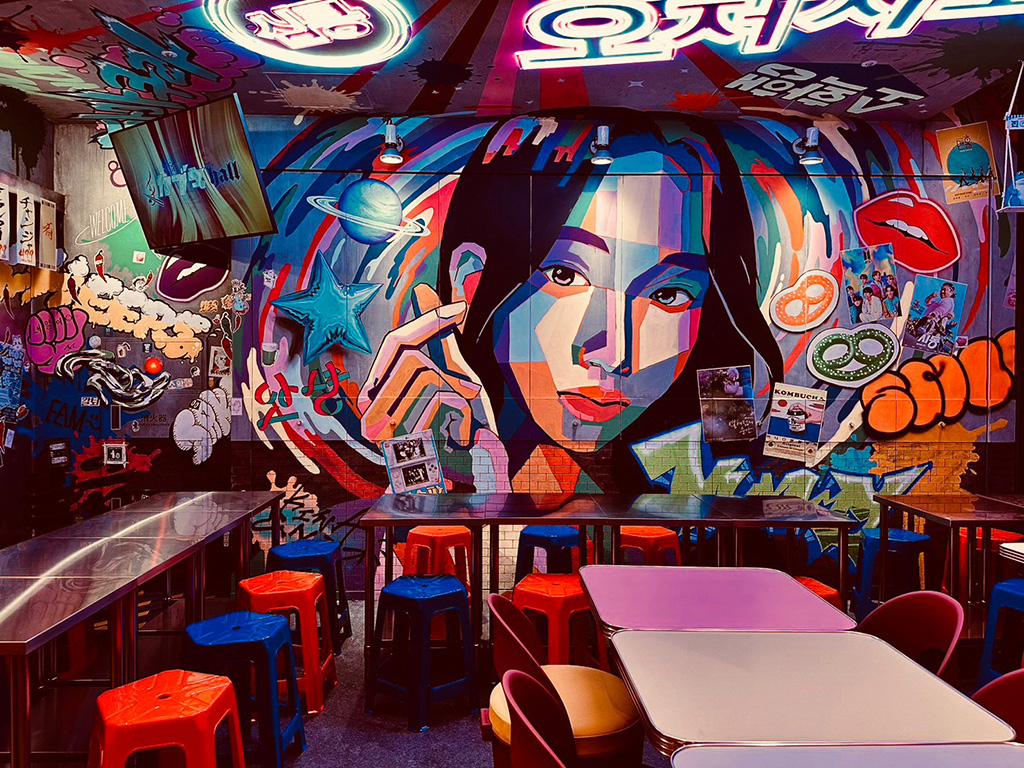
This shop (look for this on the sign 韓国食祭) bills itself as serving fare that is known in Japan as “B class gourmet.” It being Korean food, you can expect much of it to be spicy, including spicy kimchi (spicy pickled/fermented cabbage), the most famous food of Korea and a symbol of Korean identity.
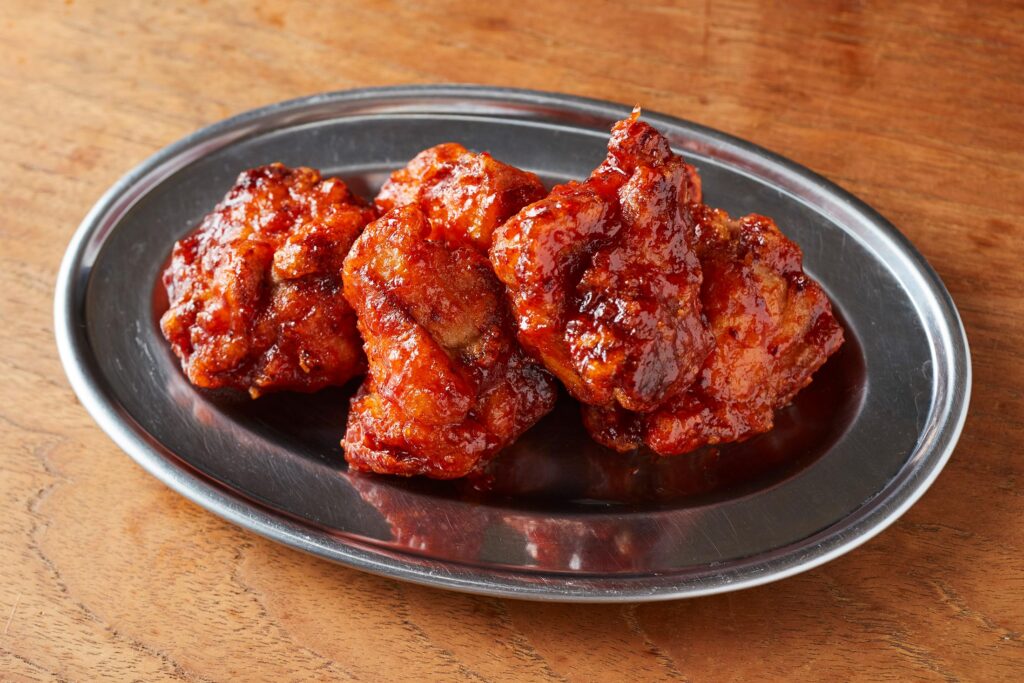
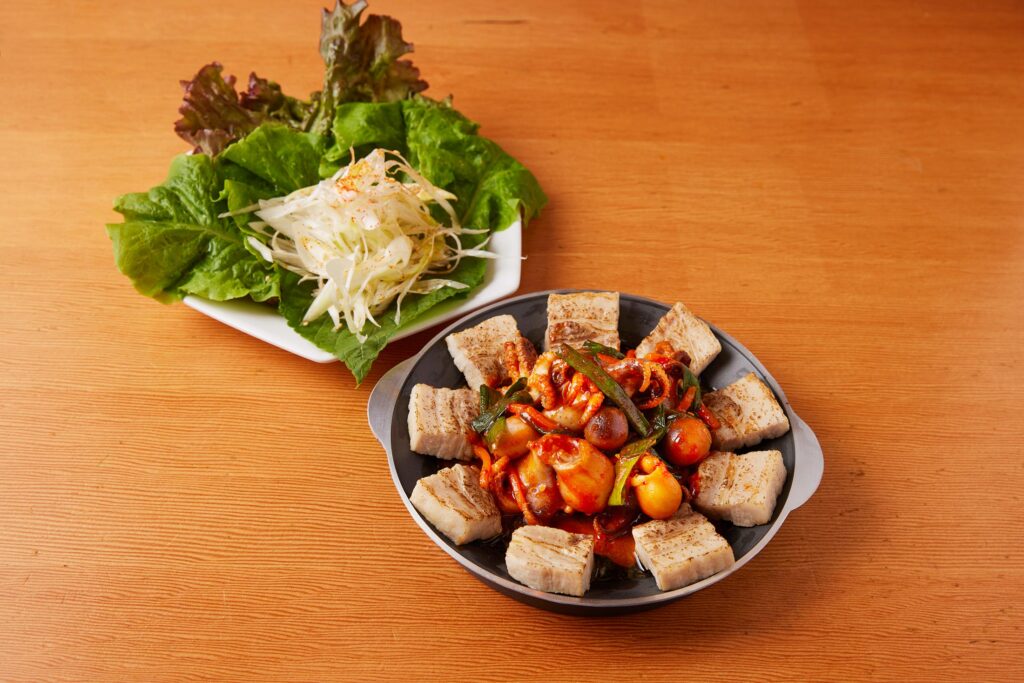
To snack on something before your main meal comes try some anko hot cakes, small pancakes with sweet anko bean paste sandwiched between. Or order some small pizza or pancake-like chijimi, either one at a time or as a set. These are perfect for sharing over drinks. There is also bibinba (or bibinbap), which is rice mixed with any number of ingredients, including meats, seafoods, and vegetables, served with a semi-raw egg on top. There are plenty of vegetables on the menu prepared in many assorted ways. There are several Korean drinks on the menu, including a Korean beer, as well as the usual Japanese offerings.
KABUKI CAFÉ
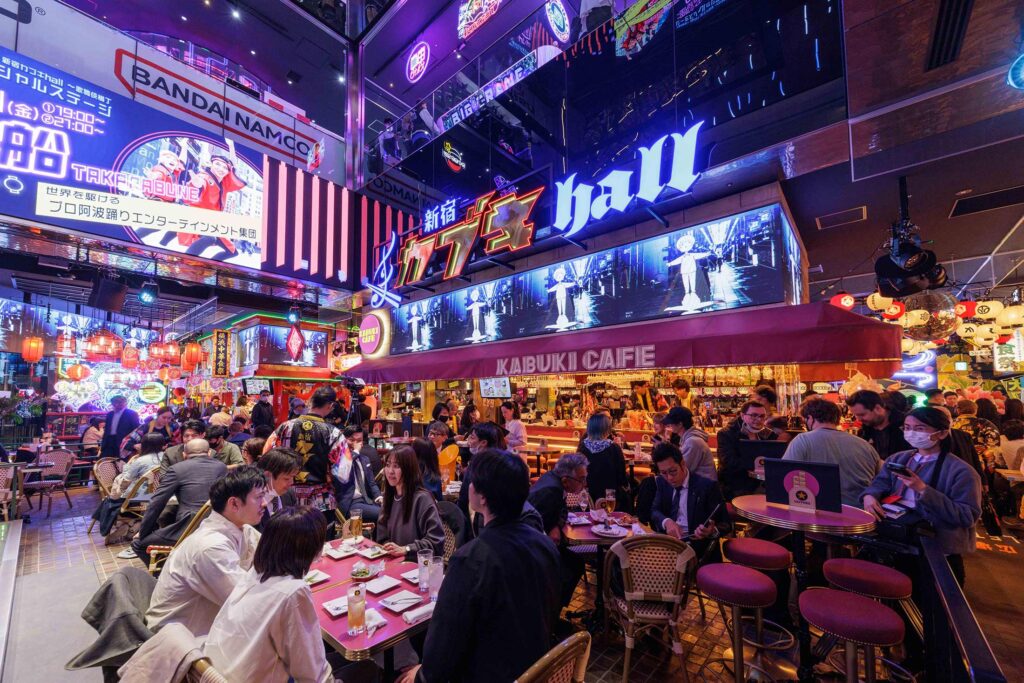
The final shop in Kabukiyockocho is the Kabuki Café. As the name implies, this is more of a café than an izakaya, although they do have champagne, including Dom Perignon, as well as punch bowls of lemon sour, as well as coffee and tea. The food is casual Italian, including pizza, spaghetti, carpaccio. There is also an assortment of fried foods, including towers of onion rings and fried potatoes, and of course there is chicken on the menu as well as deserts. The appeal of Kabuki Cafe is not only the food, but also the stage in the center of the restaurant, where daily performances of Japanese idols, artists, and traditional festivals can be enjoyed. Every evening, diners can listen to a DJ play while they dine.
A Festival of Japan’s Diverse Food Culture
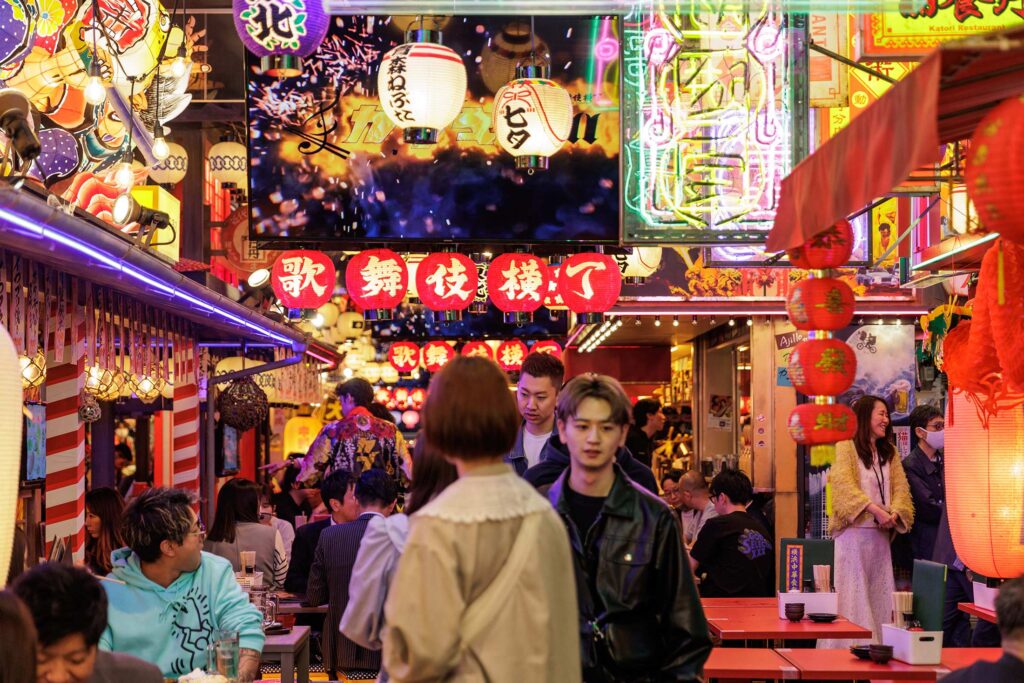
By now you should be able to see how diverse and delicious Japan’s food culture is. Every region has its own unique dishes and ingredients, and a great many of them are available in one spacious hall at Kabukiyokocho. Whether you’re visiting Japan as a tourist and looking to enjoy a party, find a unique and fun place to explore, or simply experience Japanese food culture, Kabukiyokocho is a great and festive place to go, a place to celebrate, and to enjoy an almost non-stop food festival.
Written by David Conklin
David Conklin
David is originally from Portland, Oregon, and currently lives in Nihonbashi, Tokyo. He researches and writes about food and food culture. His book, “Conklin-san, Eating Through Old Edo”, is well-known. Dave holds a Master’s degree in Japanese History, his thesis focused on the history of Japanese food in pre-war America.

